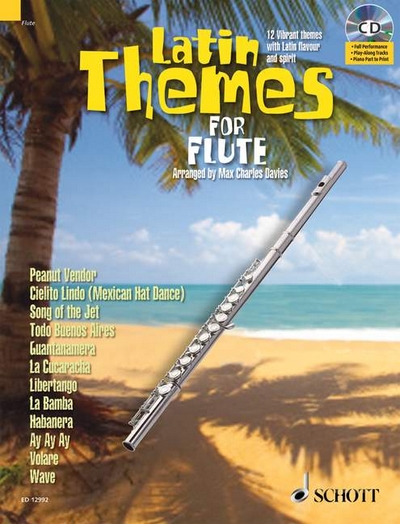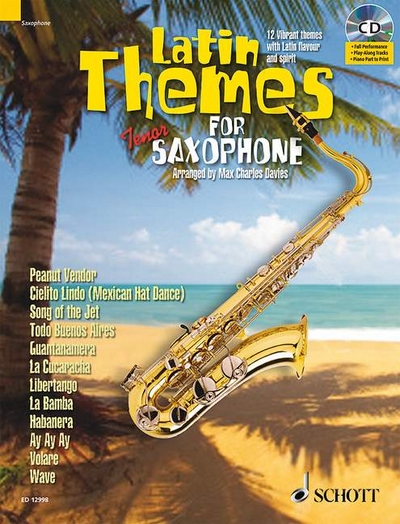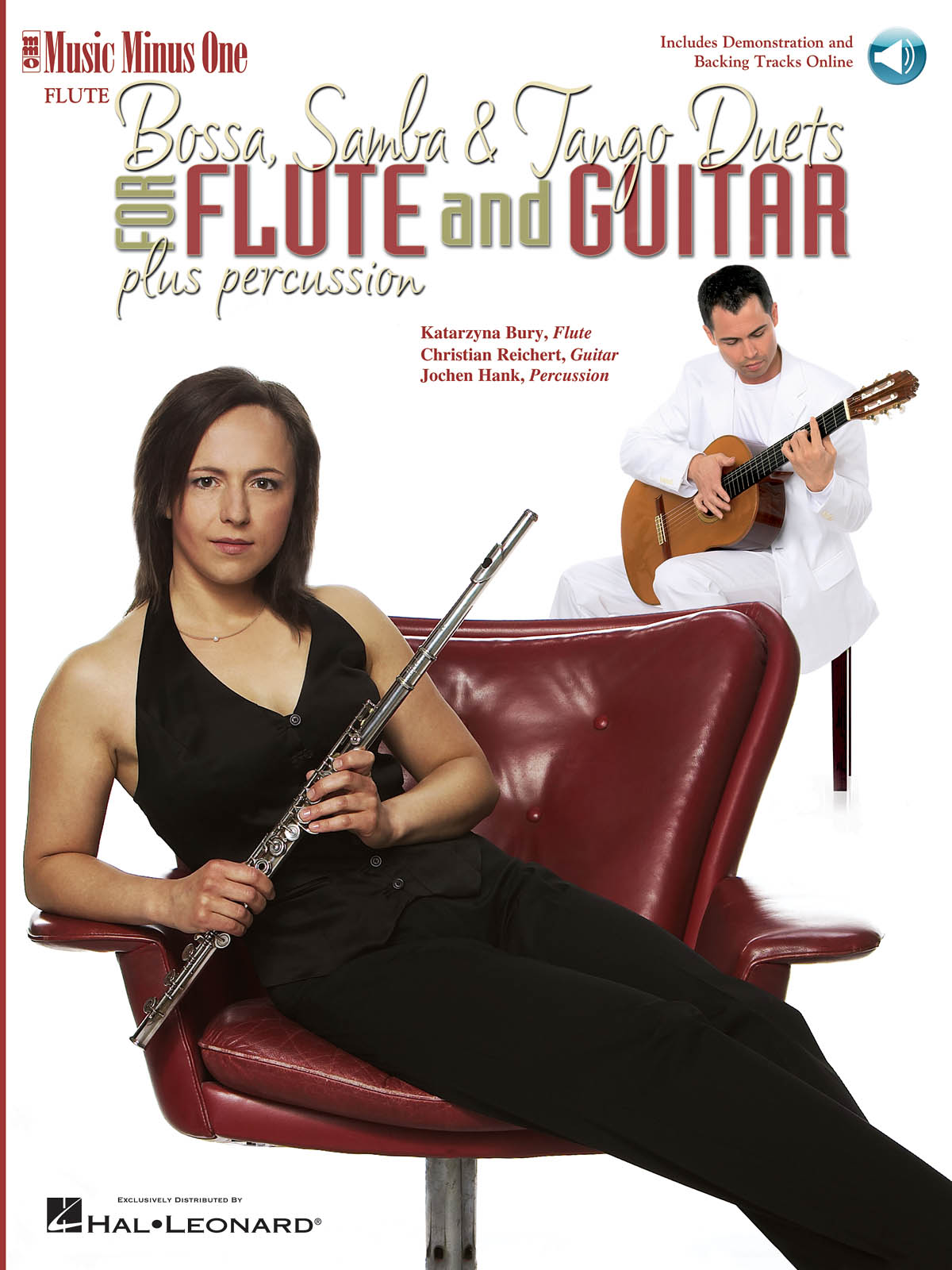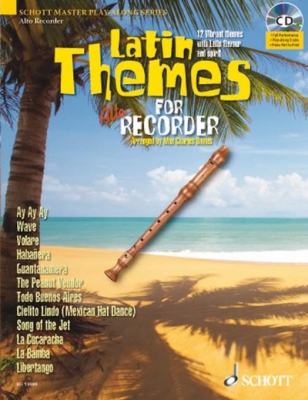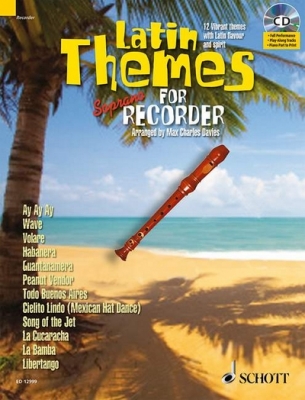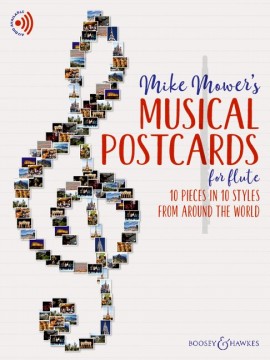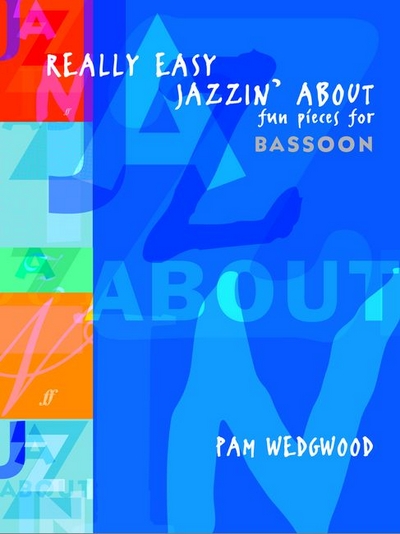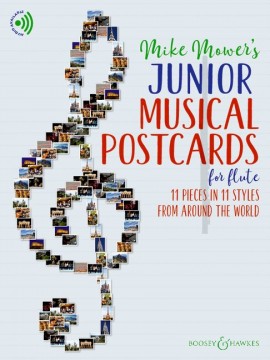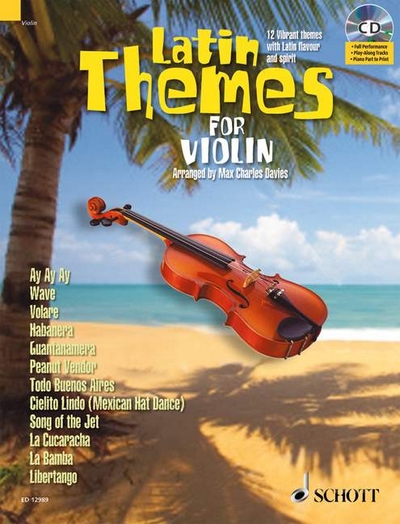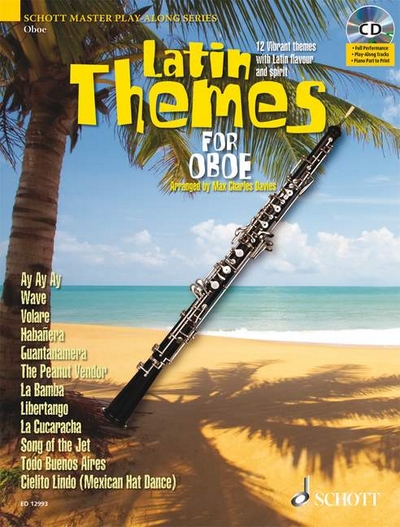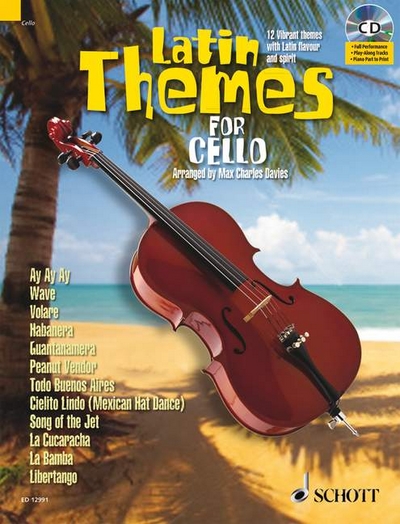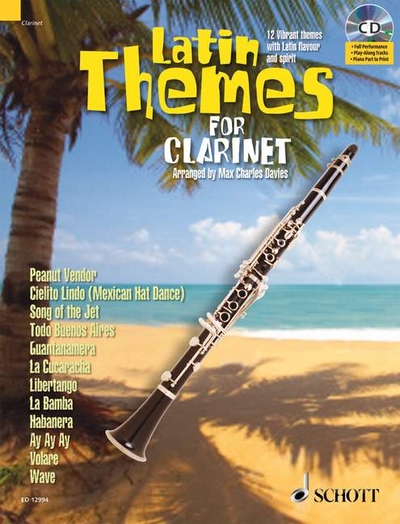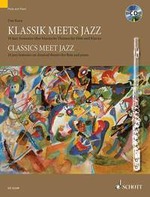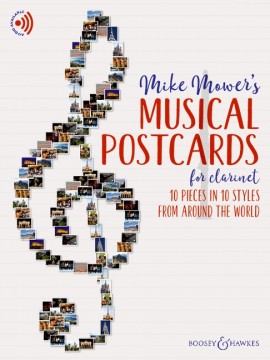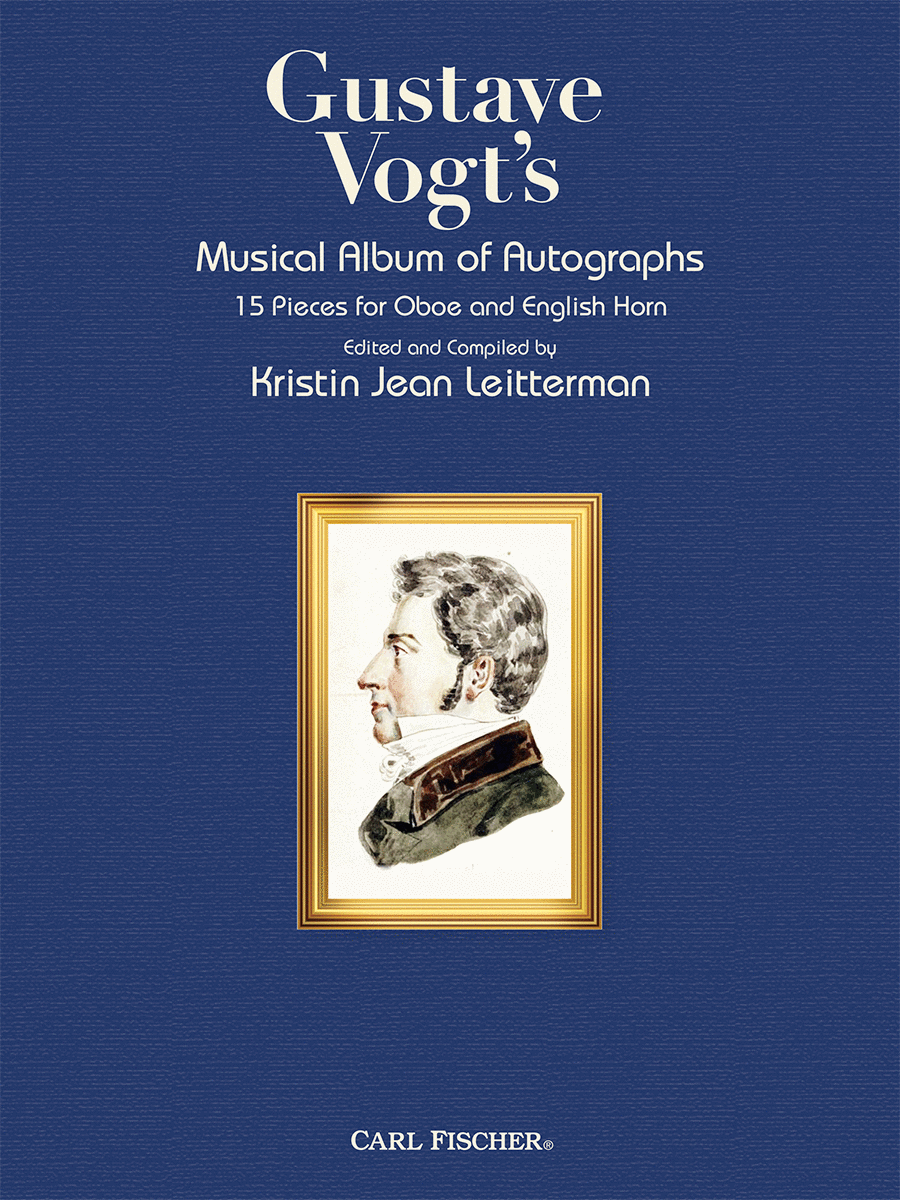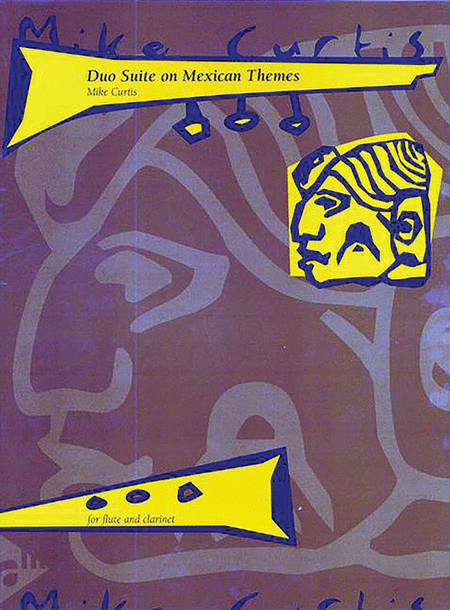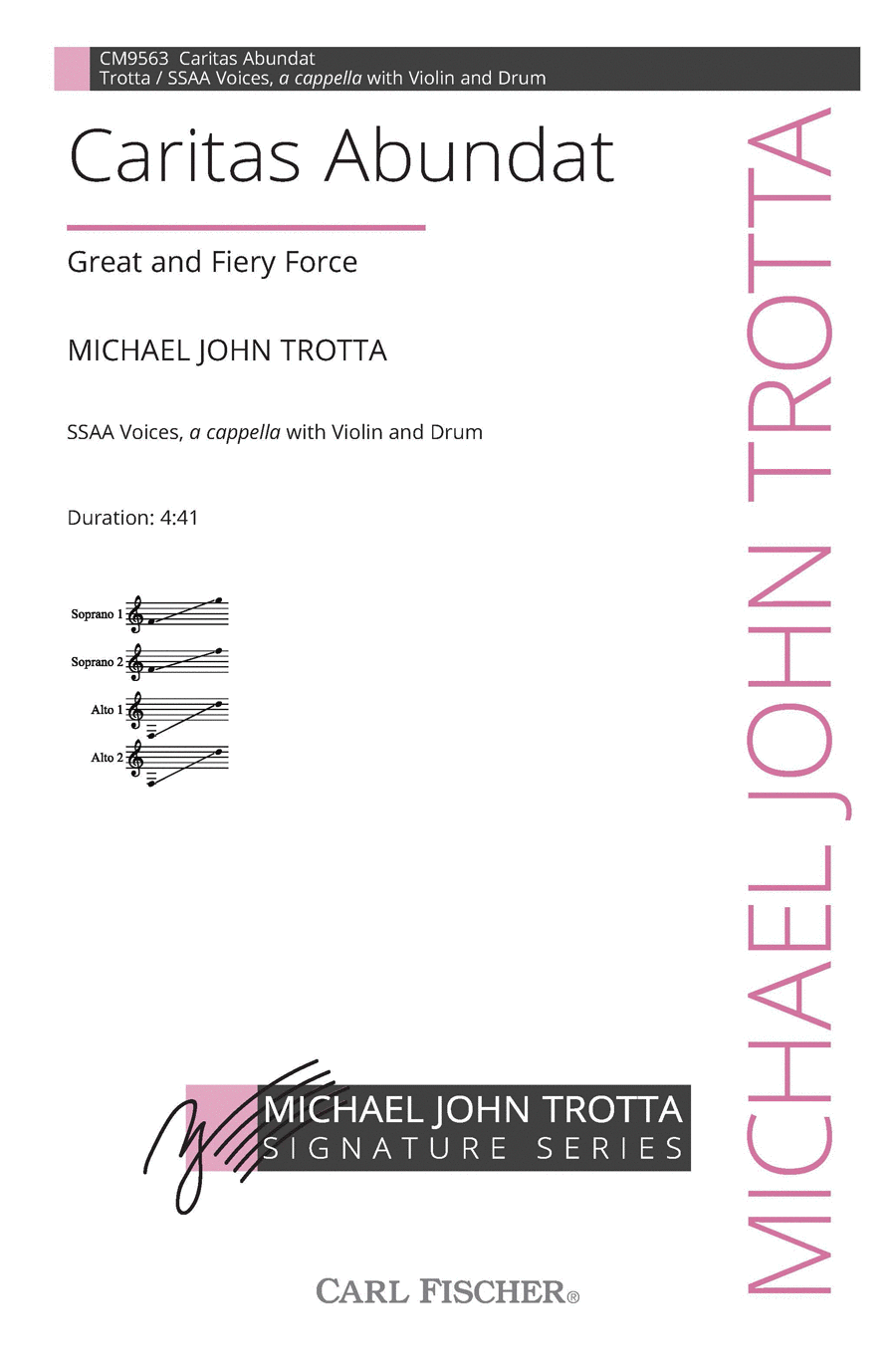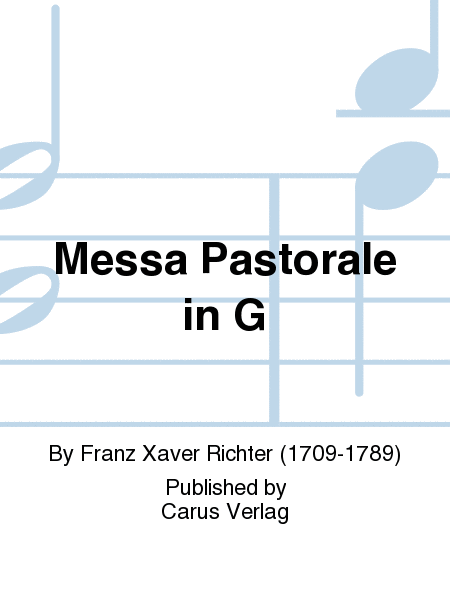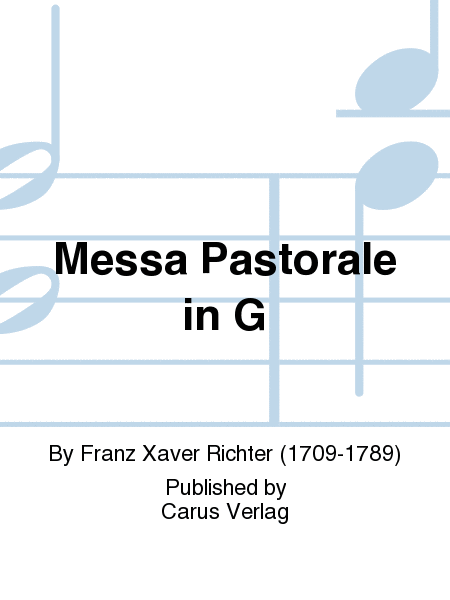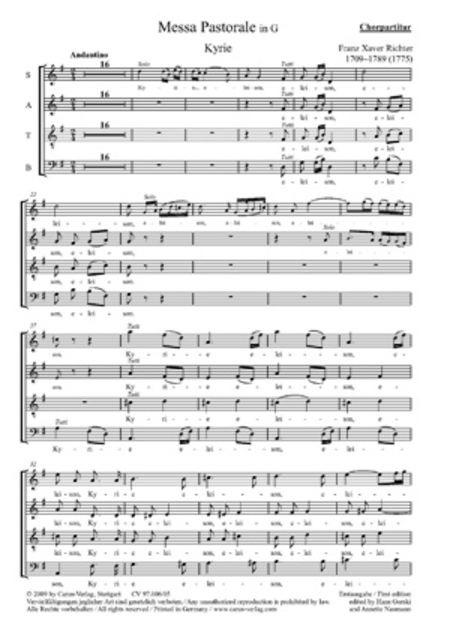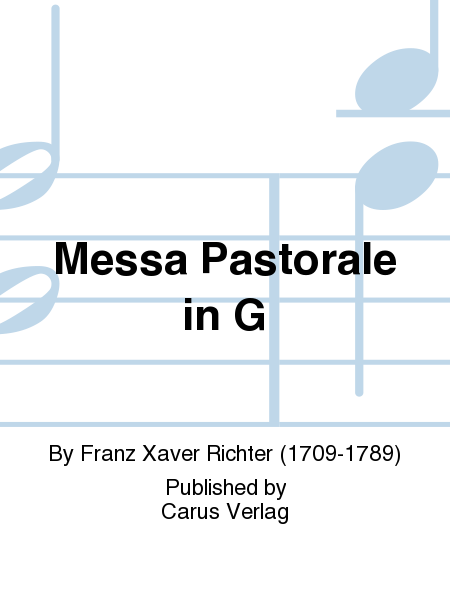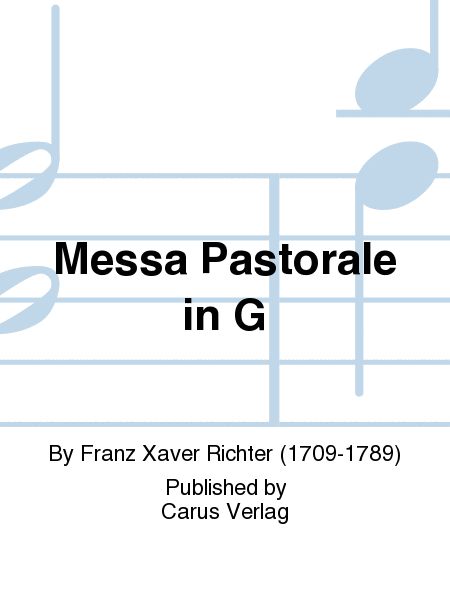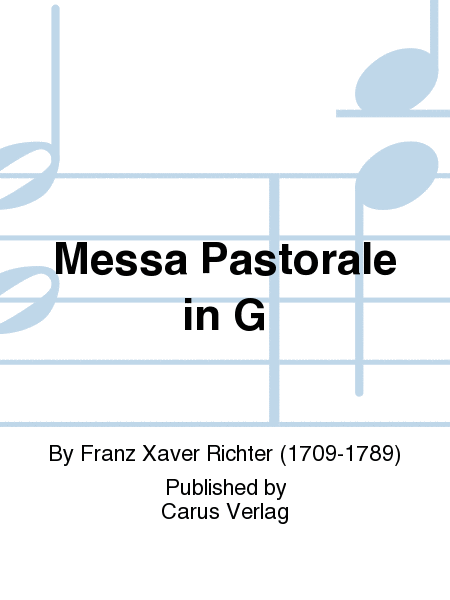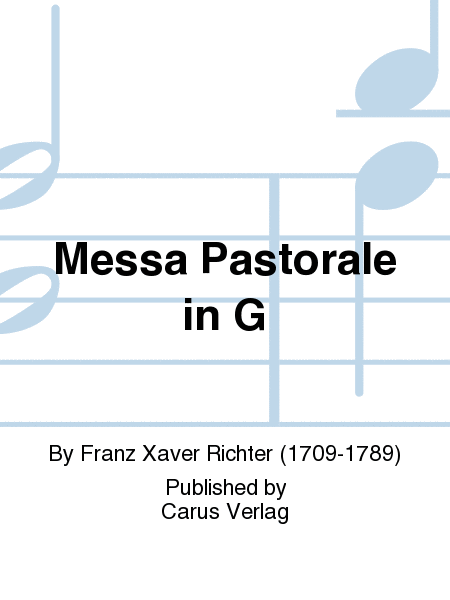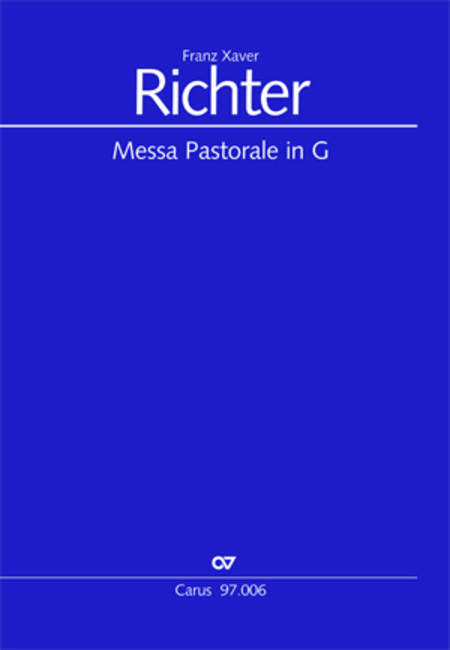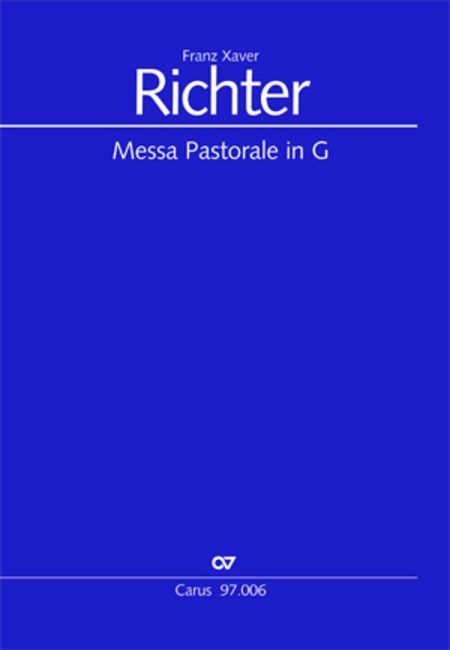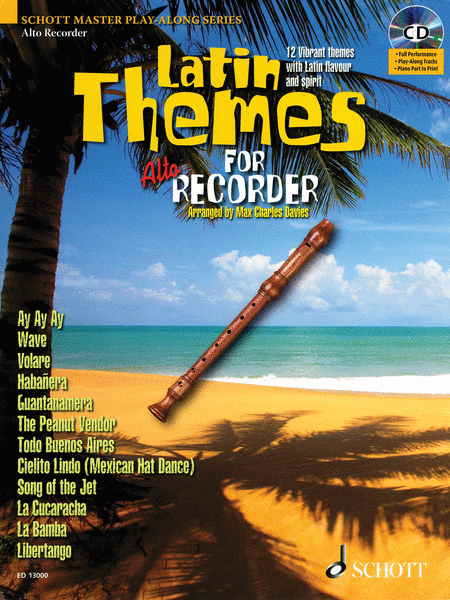|
| Latin Themes For Tenor
Saxophone
Saxophone Tenor [Partition + CD]
Schott
12 Vibrant Themes With Latin Flavour And Spirit. Jouer avec support authentique ...(+)
12 Vibrant Themes With Latin Flavour And Spirit. Jouer avec support authentique pistes dans cette superbe collection de thèmes Latin. Mettant en vedette 12 arrangements du célèbres favoris latins y compris and lsquo - La Bamba and rsquo-, and lsquo - Guantanamera and rsquo-, and lsquo - Volare and rsquo-, and lsquo - Cielito Lindo and rsquo - et and l / Schott Master Play-Along Series / Recueil / Saxophone Ténor
Délais: 2-5 jours - En Stock Fournisseur | | |
| Latin Themes For
Flûte
Flûte traversière [Partition + CD]
Schott
12 Vibrant Themes With Latin Flavour And Spirit. Jouer avec support authentique ...(+)
12 Vibrant Themes With Latin Flavour And Spirit. Jouer avec support authentique pistes dans cette superbe collection de thèmes Latin. Mettant en vedette 12 arrangements du célèbres favoris latins y compris and lsquo - La Bamba and rsquo-, and lsquo - Guantanamera and rsquo-, and lsquo - Volare and rsquo-, and lsquo - Cielito Lindo and rsquo - et and l / Schott Master Play-Along Series / Recueil / Flûte Traversière
Délais: 2-5 jours - En Stock Fournisseur | | |
| Bossa, Samba and Tango
Duets
Flûte traversière [Partition + Accès audio]
Hal Leonard
Partie de Flûte Solo. Performed by Katarzyna Bury, flute Accompaniment: Christi...(+)
Partie de Flûte Solo. Performed by Katarzyna Bury, flute Accompaniment: Christian Reichert, guitar, Jochen Hank, percussion Here is a collection of Latin masterpieces, arranged for flute, guitar and percussion. From the fabled Granada and François Borne's rousing Fantasy on Themes from Bizet's Carmen, to Brasilian superstar Celso Machado's magnificent Suite Popular Brasileira and Astor Piazzolla's Libertango, there is a wealth of thrilling music for every flutist. Listen to virtuosi Katarzyna Bury and Christian Reichert perform these classic pieces in a complete reference recording. Then you take Ms. Bury's place alongside Mr. Reichert and the percussionist for a Latin music-fest that you will never forget! Bravo! Includes a printed solo flute part, and access to online audio recordings of a complete version with soloist and a digital stereo version of the accompaniment, minus the soloist./ Recueil / Flûte Traversière
Délais: En Stock | | |
| Latin Themes For Alto
Recorder
Flûte à bec Alto [Partition + CD]
Schott
Jouer avec support authentique pistes dans cette superbe collection de thèmes L...(+)
Jouer avec support authentique pistes dans cette superbe collection de thèmes Latin. Mettant en vedette 12 arrangements du célèbres favoris latins y compris and lsquo - La Bamba and rsquo-, and lsquo - Guantanamera and rsquo-, and lsquo - Volare and rsquo-, and lsquo - Cielito Lindo and rsquo - et and lsquo - chanson de la Jet and rsquo-. Le CD accompagne contient des pistes de soutien mettant en vedette groupe Latin live, complet avec les versions de démonstration de chaque piste. Accompagnements piano sont également disponibles en format PDF sur le CD. / Flûte A Bec Alto
Délais: 2-5 jours - En Stock Fournisseur | | |
| Latin Themes For Soprano
Recorder
Flûte à bec Soprano [Partition + CD]
Schott
Jouer avec support authentique pistes dans cette superbe collection de thèmes L...(+)
Jouer avec support authentique pistes dans cette superbe collection de thèmes Latin. Mettant en vedette 12 arrangements du célèbres favoris latins y compris and lsquo - La Bamba and rsquo-, and lsquo - Guantanamera and rsquo-, and lsquo - Volare and rsquo-, and lsquo - Cielito Lindo and rsquo - et and l / Flûte A Bec Soprano
Délais: 2-5 jours - En Stock Fournisseur | | |
| Musical Postcards for
Flute
Flûte traversière [Partition + Accès audio]
Boosey and Hawkes
10 pieces in 10 styles from around the world. Par MOWER MIKE. From Rio to Red Sq...(+)
10 pieces in 10 styles from around the world. Par MOWER MIKE. From Rio to Red Square, Mike Mower's Musical Postcards features ten captivating pieces in different musical styles from around the world. Experience the thrill of Puerto Rican salsa, the magic of an Irish reel, the romance of French café music, and much more ' Available in editions for alto saxophone, flute, clarinet, trumpet and violin, each book contains melody lines with chord symbols to aid improvisation. Every piece is brought to life with a postcard of essential background information and playing tips. A book of keyboard accompaniments is available separately. Spectacular and authentic audio performances and backing tracks of every piece played by bands and musicians from all ten countries are available online. A professional musician for 40 years, Mike Mower has played in orchestras, big bands, chamber ensembles, shows, jazz bands, and recording sessions around the world in classical, jazz, Latin, and rock styles on flutes, saxophones, and clarinets. He has written concertos for international solo artists and orchestras and concert music for ensembles of all sizes ' in addition to composing, arranging, and producing TV themes and commercial music albums. His fun but challenging educational music has been enjoyed by a generation of younger players. The Musical Postcards and Junior Musical Postcards series (with accompaniment by some international recording artists too famous to mention!) celebrates authentic music genres from all over the globe. / Date parution : 2024-01-06/ Recueil / Flûte Traversière
Délais: En Stock | | |
| Really Easy Jazzin'
About
Flûte Traversière
(Matériel Pédagogique)
I.M.P.
'Equipe bois ' est fermement établi que la série Best-seller de tuteurs de boi...(+)
'Equipe bois ' est fermement établi que la série Best-seller de tuteurs de bois. Il présente un cours flexible qui peuvent être adapté en fonction de chaque élève, idéal pour le groupe individuel et de frais de scolarité - y compris les médailles de musique ABRSM de la classe. Les livres de la série contiennent beaucoup de musique soigneusement classée dans un large éventail de styles, des époques Baroque et classique de film, de folk, de jazz et d'Amérique latine. La série encourage ensemble jouant avec un répertoire varié pour les deux orchestrale et instruments de la fanfare et développe des compétences aural liées à l'instrument, d'improvisation et de composition. Tous les livres de la série sont entièrement intégrés permettant aux étudiants à l'aide de ' Equipe bois ' à jouer dans les ensembles avec les élèves à l'aide de ' Equipe Brass ', ' Equipe percussions ', ' Equipe Recorder ' et ' Equipe chaînes '. Un livre/CD est également disponible comprenant plus de 70 choeurs de pistes pour rendre chaque élève à se sentir comme un interprète star. / Flûte Traversière (Matériel Pédagogique)
Délais: 2-5 jours - En Stock Fournisseur | | |
| Junior Musical Postcards
for Flute
Flûte traversière [Partition + Accès audio] - Intermédiaire
Boosey and Hawkes
11 pieces in 11 styles from around the world. Par . All aboard for a musical tou...(+)
11 pieces in 11 styles from around the world. Par . All aboard for a musical tour of the globe with Mike Mower! Junior Musical Postcards contains eleven sparkling pieces in fascinating world music styles, tailor-made for developing musicians. The trip begins with a boisterous Cajun stomp, and concludes with an elegant Viennese polka, taking in stops in countries as varied as China, Jamaica, and Wales along the way. Available in editions for alto saxophone, flute, clarinet, trumpet and violin, each book contains melody lines with chord symbols to aid improvisation. Every piece is brought to life with a postcard of essential background information and playing tips. A book of keyboard accompaniments is available separately. Spectacular and authentic audio performances and backing tracks of every piece played by bands and musicians from all eleven countries are available online. A professional musician for 40 years, Mike Mower has played in orchestras, big bands, chamber ensembles, shows, jazz bands, and recording sessions around the world in classical, jazz, Latin, and rock styles on flutes, saxophones, and clarinets. He has written concertos for international solo artists and orchestras and concert music for ensembles of all sizes ' in addition to composing, arranging, and producing TV themes and commercial music albums. His fun but challenging educational music has been enjoyed by a generation of younger players. The Musical Postcards and Junior Musical Postcards series (with accompaniment by some international recording artists too famous to mention!) celebrates authentic music genres from all over the globe. / Niveau : Moyen / Date parution : 2024-01-06/ Recueil / Flûte Traversière
Délais: En Stock | | |
| Latin Themes For Violin
Violon [Partition + CD]
Schott
12 Vibrant Themes With Latin Flavour And Spirit. Jouer avec support authentique ...(+)
12 Vibrant Themes With Latin Flavour And Spirit. Jouer avec support authentique pistes avec cette superbe collection de thèmes Latin. Mettant en vedette 12 ententes de favoris latins célèbres notamment ' La Bamba ', ' Guantanamera ', ' Volare ', ' Cielito Lindo ' et ' Song du Jet '. Le CD accompagnant contient / Schott Master Play-Along Series / Recueil / Violon
Délais: 2-5 jours - En Stock Fournisseur | | |
| Latin Themes For Oboe
Hautbois [Partition + CD]
Schott
12 Vibrant Themes With Latin Flavour And Spirit. Jouer avec support authentique ...(+)
12 Vibrant Themes With Latin Flavour And Spirit. Jouer avec support authentique pistes dans cette superbe collection de thèmes Latin. Mettant en vedette 12 arrangements du célèbres favoris latins y compris and lsquo - La Bamba and rsquo-, and lsquo - Guantanamera and rsquo-, and lsquo - Volare and rsquo-, and lsquo - Cielito Lindo and rsquo - et and l / Schott Master Play-Along Series / Recueil / Hautbois
Délais: 2-5 jours - En Stock Fournisseur | | |
| Latin Themes For Cello
Violoncelle [Partition + CD]
Schott
12 Vibrant Themes With Latin Flavour And Spirit. Jouer avec support authentique ...(+)
12 Vibrant Themes With Latin Flavour And Spirit. Jouer avec support authentique pistes dans cette superbe collection de thèmes Latin. Mettant en vedette 12 arrangements du célèbres favoris latins y compris and lsquo - La Bamba and rsquo-, and lsquo - Guantanamera and rsquo-, and lsquo - Volare and rsquo-, and lsquo - Cielito Lindo and rsquo - et and l / Schott Master Play-Along Series / Recueil / Violoncelle
Délais: 2-5 jours - En Stock Fournisseur | | |
| Latin Themes For Clarinet
Clarinette [Partition + CD]
Schott
12 Vibrant Themes With Latin Flavour And Spirit. Jouer avec support authentique ...(+)
12 Vibrant Themes With Latin Flavour And Spirit. Jouer avec support authentique pistes dans cette superbe collection de thèmes Latin. Mettant en vedette 12 arrangements du célèbres favoris latins y compris and lsquo - La Bamba and rsquo-, and lsquo - Guantanamera and rsquo-, and lsquo - Volare and rsquo-, and lsquo - Cielito Lindo and rsquo - et and l / Schott Master Play-Along Series / Recueil / Clarinette
Délais: 2-5 jours - En Stock Fournisseur | | |
| Classics Meet Jazz
Flûte traversière et
Piano
Schott
The fact that classical music and jazz are not mutually exclusive is proven by t...(+)
The fact that classical music and jazz are not mutually exclusive is proven by the new volume in the popular series by Uwe Korn: For the tune book, 10 classical themes have been carefully arranged for flute and piano and made into jazz pieces for two. Great fun to play. / Flûte Et Piano
Délais: 2-5 jours - En Stock Fournisseur | | |
| Musical Postcards for
Clarinet
Clarinette [Partition + Accès audio]
Boosey and Hawkes
10 pieces in 10 styles from around the world. Par MOWER MIKE. From Rio to Red Sq...(+)
10 pieces in 10 styles from around the world. Par MOWER MIKE. From Rio to Red Square, Mike Mower's Musical Postcards features ten captivating pieces in different musical styles from around the world. Experience the thrill of Puerto Rican salsa, the magic of an Irish reel, the romance of French café music, and much more '
Available in editions for alto saxophone, flute, clarinet, trumpet and violin, each book contains melody lines with chord symbols to aid improvisation.
Every piece is brought to life with a postcard of essential background information and playing tips. A book of keyboard accompaniments is available separately.
Spectacular and authentic audio performances and backing tracks of every piece played by bands and musicians from all ten countries are available online.
A professional musician for 40 years, Mike Mower has played in orchestras, big bands, chamber ensembles, shows, jazz bands, and recording sessions around the world in classical, jazz, Latin, and rock styles on flutes, saxophones, and clarinets.
He has written concertos for international solo artists and orchestras and concert music for ensembles of all sizes ' in addition to composing, arranging, and producing TV themes and commercial music albums.
His fun but challenging educational music has been enjoyed by a generation of younger players. The Musical Postcards and Junior Musical Postcards series (with accompaniment by some international recording artists too famous to mention!) celebrates authentic music genres from all over the globe. / Niveau : facile - moyen / Date parution : 2024-01-06/ Recueil / Clarinette
Délais: En Stock | | |
| Musical Postcards for
Alto Saxophone
Saxophone Alto
Boosey and Hawkes
10 pieces in 10 styles from around the world. Par MOWER MIKE. From Rio to Red Sq...(+)
10 pieces in 10 styles from around the world. Par MOWER MIKE. From Rio to Red Square, Mike Mower's Musical Postcards features ten captivating pieces in different musical styles from around the world. Experience the thrill of Puerto Rican salsa, the magic of an Irish reel, the romance of French café music, and much more ' Available in editions for alto saxophone, flute, clarinet, trumpet and violin, each book contains melody lines with chord symbols to aid improvisation. Every piece is brought to life with a postcard of essential background information and playing tips. A book of keyboard accompaniments is available separately. Spectacular and authentic audio performances and backing tracks of every piece played by bands and musicians from all ten countries are available online. A professional musician for 40 years, Mike Mower has played in orchestras, big bands, chamber ensembles, shows, jazz bands, and recording sessions around the world in classical, jazz, Latin, and rock styles on flutes, saxophones, and clarinets. He has written concertos for international solo artists and orchestras and concert music for ensembles of all sizes ' in addition to composing, arranging, and producing TV themes and commercial music albums. His fun but challenging educational music has been enjoyed by a generation of younger players. The Musical Postcards and Junior Musical Postcards series (with accompaniment by some international recording artists too famous to mention!) celebrates authentic music genres from all over the globe. / Niveau : facile - moyen / Date parution : 2024-01-06/ Recueil / Saxophone Alto
Délais: En Stock | |
|
|
|
| Gustave Vogt's Musical Album of Autographs
Cor anglais, Piano
Carl Fischer
Chamber Music English Horn, Oboe SKU: CF.WF229 15 Pieces for Oboe and ...(+)
Chamber Music English
Horn, Oboe SKU:
CF.WF229 15 Pieces
for Oboe and English
Horn. Composed by
Gustave Vogt. Edited by
Kristin Jean Leitterman.
Collection - Performance.
32+8 pages. Carl Fischer
Music #WF229. Published
by Carl Fischer Music
(CF.WF229). ISBN
9781491153789. UPC:
680160911288. Intro
duction Gustave Vogt's
Musical Paris Gustave
Vogt (1781-1870) was born
into the Age of
Enlightenment, at the
apex of the
Enlightenment's outreach.
During his lifetime he
would observe its effect
on the world. Over the
course of his life he
lived through many
changes in musical style.
When he was born,
composers such as Mozart
and Haydn were still
writing masterworks
revered today, and
eighty-nine years later,
as he departed the world,
the new realm of
Romanticism was beginning
to emerge with Mahler,
Richard Strauss and
Debussy, who were soon to
make their respective
marks on the musical
world. Vogt himself left
a huge mark on the
musical world, with
critics referring to him
as the grandfather of the
modern oboe and the
premier oboist of Europe.
Through his eighty-nine
years, Vogt would live
through what was perhaps
the most turbulent period
of French history. He
witnessed the French
Revolution of 1789,
followed by the many
newly established
governments, only to die
just months before the
establishment of the
Third Republic in 1870,
which would be the
longest lasting
government since the
beginning of the
revolution. He also
witnessed the
transformation of the
French musical world from
one in which opera
reigned supreme, to one
in which virtuosi,
chamber music, and
symphonic music ruled.
Additionally, he
experienced the
development of the oboe
right before his eyes.
When he began playing in
the late eighteenth
century, the standard
oboe had two keys (E and
Eb) and at the time of
his death in 1870, the
System Six Triebert oboe
(the instrument adopted
by Conservatoire
professor, Georges
Gillet, in 1882) was only
five years from being
developed. Vogt was born
March 18, 1781 in the
ancient town of
Strasbourg, part of the
Alsace region along the
German border. At the
time of his birth,
Strasbourg had been
annexed by Louis XIV, and
while heavily influenced
by Germanic culture, had
been loosely governed by
the French for a hundred
years. Although it is
unclear when Vogt began
studying the oboe and
when his family made its
move to the French
capital, the Vogts may
have fled Strasbourg in
1792 after much of the
city was destroyed during
the French Revolution. He
was without question
living in Paris by 1798,
as he enrolled on June 8
at the newly established
Conservatoire national de
Musique to study oboe
with the school's first
oboe professor,
Alexandre-Antoine
Sallantin (1775-1830).
Vogt's relationship with
the Conservatoire would
span over half a century,
moving seamlessly from
the role of student to
professor. In 1799, just
a year after enrolling,
he was awarded the
premier prix, becoming
the fourth oboist to
achieve this award. By
1802 he had been
appointed repetiteur,
which involved teaching
the younger students and
filling in for Sallantin
in exchange for a free
education. He maintained
this rank until 1809,
when he was promoted to
professor adjoint and
finally to professor
titulaire in 1816 when
Sallantin retired. This
was a position he held
for thirty-seven years,
retiring in 1853, making
him the longest serving
oboe professor in the
school's history. During
his tenure, he became the
most influential oboist
in France, teaching
eighty-nine students,
plus sixteen he taught
while he was professor
adjoint and professor
titulaire. Many of these
students went on to be
famous in their own
right, such as Henri Brod
(1799-1839), Apollon
Marie-Rose Barret
(1804-1879), Charles
Triebert (1810-1867),
Stanislas Verroust
(1814-1863), and Charles
Colin (1832-1881). His
influence stretches from
French to American oboe
playing in a direct line
from Charles Colin to
Georges Gillet
(1854-1920), and then to
Marcel Tabuteau
(1887-1966), the oboist
Americans lovingly
describe as the father of
American oboe playing.
Opera was an important
part of Vogt's life. His
first performing position
was with the
Theatre-Montansier while
he was still studying at
the Conservatoire.
Shortly after, he moved
to the Ambigu-Comique
and, in 1801 was
appointed as first oboist
with the Theatre-Italien
in Paris. He had been in
this position for only a
year, when he began
playing first oboe at the
Opera-Comique. He
remained there until
1814, when he succeeded
his teacher,
Alexandre-Antoine
Sallantin, as soloist
with the Paris Opera, the
top orchestra in Paris at
the time. He played with
the Paris Opera until
1834, all the while
bringing in his current
and past students to fill
out the section. In this
position, he began to
make a name for himself;
so much so that specific
performances were
immortalized in memoirs
and letters. One comes
from a young Hector
Berlioz (1803-1865) after
having just arrived in
Paris in 1822 and
attended the Paris
Opera's performance of
Mehul's Stratonice and
Persuis' ballet Nina. It
was in response to the
song Quand le bien-amie
reviendra that Berlioz
wrote: I find it
difficult to believe that
that song as sung by her
could ever have made as
true and touching an
effect as the combination
of Vogt's instrument...
Shortly after this,
Berlioz gave up studying
medicine and focused on
music. Vogt frequently
made solo and chamber
appearances throughout
Europe. His busiest
period of solo work was
during the 1820s. In 1825
and 1828 he went to
London to perform as a
soloist with the London
Philharmonic Society.
Vogt also traveled to
Northern France in 1826
for concerts, and then in
1830 traveled to Munich
and Stuttgart, visiting
his hometown of
Strasbourg on the way.
While on tour, Vogt
performed Luigi
Cherubini's (1760-1842)
Ave Maria, with soprano
Anna (Nanette) Schechner
(1806-1860), and a
Concertino, presumably
written by himself. As a
virtuoso performer in
pursuit of repertoire to
play, Vogt found himself
writing much of his own
music. His catalog
includes chamber music,
variation sets, vocal
music, concerted works,
religious music, wind
band arrangements, and
pedagogical material. He
most frequently performed
his variation sets, which
were largely based on
themes from popular
operas he had, presumably
played while he was at
the Opera. He made his
final tour in 1839,
traveling to Tours and
Bordeaux. During this
tour he appeared with the
singer Caroline Naldi,
Countess de Sparre, and
the violinist Joseph
Artot (1815-1845). This
ended his active career
as a soloist. His
performance was described
in the Revue et gazette
musicale de Paris as
having lost none of his
superiority over the
oboe.... It's always the
same grace, the same
sweetness. We made a trip
to Switzerland, just by
closing your eyes and
listening to Vogt's oboe.
Vogt was also active
performing in Paris as a
chamber and orchestral
musician. He was one of
the founding members of
the Societe des Concerts
du Conservatoire, a group
established in 1828 by
violinist and conductor
Francois-Antoine Habeneck
(1781-1849). The group
featured faculty and
students performing
alongside each other and
works such as Beethoven
symphonies, which had
never been heard in
France. He also premiered
the groundbreaking
woodwind quintets of
Antonin Reicha
(1770-1836). After his
retirement from the Opera
in 1834 and from the
Societe des Concerts du
Conservatoire in 1842,
Vogt began to slow down.
His final known
performance was of
Cherubini's Ave Maria on
English horn with tenor
Alexis Dupont (1796-1874)
in 1843. He then began to
reflect on his life and
the people he had known.
When he reached his 60s,
he began gathering
entries for his Musical
Album of Autographs.
Autograph Albums Vogt's
Musical Album of
Autographs is part of a
larger practice of
keeping autograph albums,
also commonly known as
Stammbuch or Album
Amicorum (meaning book of
friendship or friendship
book), which date back to
the time of the
Reformation and the
University of Wittenberg.
It was during the
mid-sixteenth century
that students at the
University of Wittenberg
began passing around
bibles for their fellow
students and professors
to sign, leaving messages
to remember them by as
they moved on to the next
part of their lives. The
things people wrote were
mottos, quotes, and even
drawings of their family
coat of arms or some
other scene that meant
something to the owner.
These albums became the
way these young students
remembered their school
family once they had
moved on to another
school or town. It was
also common for the
entrants to comment on
other entries and for the
owner to amend entries
when they learned of
important life details
such as marriage or
death. As the practice
continued, bibles were
set aside for emblem
books, which was a
popular book genre that
featured allegorical
illustrations (emblems)
in a tripartite form:
image, motto, epigram.
The first emblem book
used for autographs was
published in 1531 by
Andrea Alciato
(1492-1550), a collection
of 212 Latin emblem
poems. In 1558, the first
book conceived for the
purpose of the album
amicorum was published by
Lyon de Tournes
(1504-1564) called the
Thesaurus Amicorum. These
books continued to
evolve, and spread to
wider circles away from
universities. Albums
could be found being kept
by noblemen, physicians,
lawyers, teachers,
painters, musicians, and
artisans. The albums
eventually became more
specialized, leading to
Musical Autograph Albums
(or Notestammbucher).
Before this
specialization, musicians
contributed in one form
or another, but our
knowledge of them in
these albums is mostly
limited to individual
people or events. Some
would simply sign their
name while others would
insert a fragment of
music, usually a canon
(titled fuga) with text
in Latin. Canons were
popular because they
displayed the
craftsmanship of the
composer in a limited
space. Composers
well-known today,
including J. S. Bach,
Telemann, Mozart,
Beethoven, Dowland, and
Brahms, all participated
in the practice, with
Beethoven being the first
to indicate an interest
in creating an album only
of music. This interest
came around 1815. In an
1845 letter from Johann
Friedrich Naue to
Heinrich Carl
Breidenstein, Naue
recalled an 1813 visit
with Beethoven, who
presented a book
suggesting Naue to
collect entries from
celebrated musicians as
he traveled. Shortly
after we find Louis Spohr
speaking about leaving on
his grand tour through
Europe in 1815 and of his
desire to carry an album
with entries from the
many artists he would
come across. He wrote in
his autobiography that
his most valuable
contribution came from
Beethoven in 1815.
Spohr's Notenstammbuch,
comprised only of musical
entries, is
groundbreaking because it
was coupled with a
concert tour, allowing
him to reach beyond the
Germanic world, where the
creation of these books
had been nearly
exclusive. Spohr brought
the practice of
Notenstammbucher to
France, and in turn
indirectly inspired Vogt
to create a book of his
own some fifteen years
later. Vogt's Musical
Album of Autographs
Vogt's Musical Album of
Autographs acts as a form
of a memoir, displaying
mementos of musicians who
held special meaning in
his life as well as
showing those with whom
he was enamored from the
younger generation. The
anonymous Pie Jesu
submitted to Vogt in 1831
marks the beginning of an
album that would span
nearly three decades by
the time the final entry,
an excerpt from Charles
Gounod's (1818-1893)
Faust, which premiered in
1859, was submitted.
Within this album we find
sixty-two entries from
musicians whom he must
have known very well
because they were
colleagues at the
Conservatoire, or
composers of opera whose
works he was performing
with the Paris Opera.
Other entries came from
performers with whom he
had performed and some
who were simply passing
through Paris, such as
Joseph Joachim
(1831-1907). Of the
sixty-three total
entries, some are
original, unpublished
works, while others came
from well-known existing
works. Nineteen of these
works are for solo piano,
sixteen utilize the oboe
or English horn, thirteen
feature the voice (in
many different
combinations, including
vocal solos with piano,
and small choral settings
up to one with double
choir), two feature
violin as a solo
instrument, and one even
features the now obscure
ophicleide. The
connections among the
sixty-two contributors to
Vogt's album are
virtually never-ending.
All were acquainted with
Vogt in some capacity,
from long-time
friendships to
relationships that were
created when Vogt
requested their entry.
Thus, while Vogt is the
person who is central to
each of these musicians,
the web can be greatly
expanded. In general, the
connections are centered
around the Conservatoire,
teacher lineages, the
Opera, and performing
circles. The
relationships between all
the contributors in the
album parallel the
current musical world, as
many of these kinds of
relationships still
exist, and permit us to
fantasize who might be
found in an album created
today by a musician of
the same standing. Also
important, is what sort
of entries the
contributors chose to
pen. The sixty-three
entries are varied, but
can be divided into
published and unpublished
works. Within the
published works, we find
opera excerpts, symphony
excerpts, mass excerpts,
and canons, while the
unpublished works include
music for solo piano,
oboe or English horn,
string instruments
(violin and cello), and
voice (voice with piano
and choral). The music
for oboe and English horn
works largely belong in
the unpublished works of
the album. These entries
were most likely written
to honor Vogt. Seven are
for oboe and piano and
were contributed by
Joseph Joachim, Pauline
Garcia Viardot
(1821-1910), Joseph
Artot, Anton Bohrer
(1783-1852), Georges
Onslow (1784-1853),
Desire Beaulieu
(1791-1863), and Narcisse
Girard (1797-1860). The
common thread between
these entries is the
simplicity of the melody
and structure. Many are
repetitive, especially
Beaulieu's entry, which
features a two-note
ostinato throughout the
work, which he even
included in his
signature. Two composers
contributed pieces for
English horn and piano,
and like the previous
oboe entries, are simple
and repetitive. These
were written by Michele
Carafa (1787-1872) and
Louis Clapisson
(1808-1866). There are
two other entries that
were unpublished works
and are chamber music.
One is an oboe trio by
Jacques Halevy
(1799-1862) and the other
is for oboe and strings
(string trio) by J. B.
Cramer (1771-1858). There
are five published works
in the album for oboe and
English horn. There are
three from operas and the
other two from symphonic
works. Ambroise Thomas
(1811-1896) contributed
an excerpt from the
Entr'acte of his opera La
Guerillero, and was
likely chosen because the
oboe was featured at this
moment. Hippolyte Chelard
(1789-1861) also chose to
honor Vogt by writing for
English horn. His entry,
for English horn and
piano, is taken from his
biggest success, Macbeth.
The English horn part was
actually taken from Lady
Macbeth's solo in the
sleepwalking scene.
Vogt's own entry also
falls into this category,
as he entered an excerpt
from Donizetti's Maria di
Rohan. The excerpt he
chose is a duet between
soprano and English horn.
There are two entries
featuring oboe that are
excerpted from symphonic
repertoire. One is a
familiar oboe melody from
Beethoven's Pastoral
Symphony entered by his
first biographer, Anton
Schindler (1796-1864).
The other is an excerpt
from Berlioz's choral
symphony, Romeo et
Juliette. He entered an
oboe solo from the Grand
Fete section of the
piece. Pedagogical
benefit All of these
works are lovely, and fit
within the album
wonderfully, but these
works also are great oboe
and English horn music
for young students. The
common thread between
these entries is the
simplicity of the melody
and structure. Many are
repetitive, especially
Beaulieu's entry, which
features a two-note
ostinato throughout the
work in the piano. This
repetitive structure is
beneficial for young
students for searching
for a short solo to
present at a studio
recital, or simply to
learn. They also work
many technical issues a
young player may
encounter, such as
mastering the rolling
finger to uncover and
recover the half hole.
This is true of Bealieu's
Pensee as well as
Onslow's Andantino.
Berlioz's entry from
Romeo et Juliette
features very long
phrases, which helps with
endurance and helps keep
the air spinning through
the oboe. Some of the
pieces also use various
levels of ornamentation,
from trills to grace
notes, and short
cadenzas. This allows the
student to learn
appropriate ways to
phrase with these added
notes. The chamber music
is a valuable way to
start younger students
with chamber music,
especially the short
quartet by Cramer for
oboe and string trio. All
of these pieces will not
tax the student to learn
a work that is more
advanced, as well as give
them a full piece that
they can work on from
beginning to end in a
couple weeks, instead of
months. Editorial Policy
The works found in this
edition are based on the
manuscript housed at the
Morgan Library in New
York City (call number
Cary 348, V886. A3). When
possible, published
scores were consulted and
compared to clarify pitch
and text. The general
difficulties in creating
an edition of these works
stem from entries that
appear to be hastily
written, and thus omit
complete articulations
and dynamic indications
for all passages and
parts. The manuscript has
been modernized into a
performance edition. The
score order from the
manuscript has been
retained. If an entry
also exists in a
published work, and this
was not indicated on the
manuscript, appropriate
titles and subtitles have
been added tacitly. For
entries that were
untitled, the beginning
tempo marking or
expressive directive has
been added as its title
tacitly. Part names have
been changed from the
original language to
English. If no part name
was present, it was added
tacitly. All scores are
transposing where
applicable. Measure
numbers have been added
at the beginning of every
system. Written
directives have been
retained in the original
language and are placed
relative to where they
appear in the manuscript.
Tempo markings from the
manuscript have been
retained, even if they
were abbreviated, i.e.,
Andte. The barlines,
braces, brackets, and
clefs are modernized. The
beaming and stem
direction has been
modernized. Key
signatures have been
modernized as some of the
flats/sharps do not
appear on the correct
lines or spaces. Time
signatures have been
modernized. In a few
cases, when a time
signature was missing in
the manuscript, it has
been added tacitly.
Triplet and rhythmic
groupings have been
modernized. Slurs, ties,
and articulations
(staccato and accent)
have been modernized.
Slurs, ties, and
articulations have been
added to parallel
passages tacitly.
Courtesy accidentals
found in the manuscript
have been removed, unless
it appeared to be helpful
to the performer. Dynamic
indications from the
manuscript have been
retained, except where
noted. --Kristin
Leitterman.
Introducti
onGustave Vogt’s
Musical ParisGustave Vogt
(1781–1870) was
born into the “Age
of Enlightenment,â€
at the apex of the
Enlightenment’s
outreach. During his
lifetime he would observe
its effect on the world.
Over the course of his
life he lived through
many changes in musical
style. When he was born,
composers such as Mozart
and Haydn were still
writing masterworks
revered today, and
eighty-nine years later,
as he departed the world,
the new realm of
Romanticism was beginning
to emerge with Mahler,
Richard Strauss and
Debussy, who were soon to
make their respective
marks on the musical
world. Vogt himself left
a huge mark on the
musical world, with
critics referring to him
as the “grandfather
of the modern oboeâ€
and the “premier
oboist of
Europe.â€Through his
eighty-nine years, Vogt
would live through what
was perhaps the most
turbulent period of
French history. He
witnessed the French
Revolution of 1789,
followed by the many
newly established
governments, only to die
just months before the
establishment of the
Third Republic in 1870,
which would be the
longest lasting
government since the
beginning of the
revolution. He also
witnessed the
transformation of the
French musical world from
one in which opera
reigned supreme, to one
in which virtuosi,
chamber music, and
symphonic music ruled.
Additionally, he
experienced the
development of the oboe
right before his eyes.
When he began playing in
the late eighteenth
century, the standard
oboe had two keys (E and
Eb) and at the time of
his death in 1870, the
“System Sixâ€
Triébert oboe (the
instrument adopted by
Conservatoire professor,
Georges Gillet, in 1882)
was only five years from
being developed.Vogt was
born March 18, 1781 in
the ancient town of
Strasbourg, part of the
Alsace region along the
German border. At the
time of his birth,
Strasbourg had been
annexed by Louis XIV, and
while heavily influenced
by Germanic culture, had
been loosely governed by
the French for a hundred
years. Although it is
unclear when Vogt began
studying the oboe and
when his family made its
move to the French
capital, the Vogts may
have fled Strasbourg in
1792 after much of the
city was destroyed during
the French Revolution. He
was without question
living in Paris by 1798,
as he enrolled on June 8
at the newly established
Conservatoire national de
Musique to study oboe
with the school’s
first oboe professor,
Alexandre-Antoine
Sallantin
(1775–1830).Vogtâ
€™s relationship with
the Conservatoire would
span over half a century,
moving seamlessly from
the role of student to
professor. In 1799, just
a year after enrolling,
he was awarded the
premier prix, becoming
the fourth oboist to
achieve this award. By
1802 he had been
appointed
répétiteur, which
involved teaching the
younger students and
filling in for Sallantin
in exchange for a free
education. He maintained
this rank until 1809,
when he was promoted to
professor adjoint and
finally to professor
titulaire in 1816 when
Sallantin retired. This
was a position he held
for thirty-seven years,
retiring in 1853, making
him the longest serving
oboe professor in the
school’s history.
During his tenure, he
became the most
influential oboist in
France, teaching
eighty-nine students,
plus sixteen he taught
while he was professor
adjoint and professor
titulaire. Many of these
students went on to be
famous in their own
right, such as Henri Brod
(1799–1839),
Apollon Marie-Rose Barret
(1804–1879),
Charles Triebert
(1810–1867),
Stanislas Verroust
(1814–1863), and
Charles Colin
(1832–1881). His
influence stretches from
French to American oboe
playing in a direct line
from Charles Colin to
Georges Gillet
(1854–1920), and
then to Marcel Tabuteau
(1887–1966), the
oboist Americans lovingly
describe as the
“father of American
oboe playing.â€Opera
was an important part of
Vogt’s life. His
first performing position
was with the
Théâtre-Montansier
while he was still
studying at the
Conservatoire. Shortly
after, he moved to the
Ambigu-Comique and, in
1801 was appointed as
first oboist with the
Théâtre-Italien in
Paris. He had been in
this position for only a
year, when he began
playing first oboe at the
Opéra-Comique. He
remained there until
1814, when he succeeded
his teacher,
Alexandre-Antoine
Sallantin, as soloist
with the Paris Opéra,
the top orchestra in
Paris at the time. He
played with the Paris
Opéra until 1834, all
the while bringing in his
current and past students
to fill out the section.
In this position, he
began to make a name for
himself; so much so that
specific performances
were immortalized in
memoirs and letters. One
comes from a young Hector
Berlioz
(1803–1865) after
having just arrived in
Paris in 1822 and
attended the Paris
Opéra’s
performance of
Mehul’s Stratonice
and Persuis’
ballet Nina. It was in
response to the song
Quand le bien-amié
reviendra that Berlioz
wrote: “I find it
difficult to believe that
that song as sung by her
could ever have made as
true and touching an
effect as the combination
of Vogt’s
instrument…â€
Shortly after this,
Berlioz gave up studying
medicine and focused on
music.Vogt frequently
made solo and chamber
appearances throughout
Europe. His busiest
period of solo work was
during the 1820s. In 1825
and 1828 he went to
London to perform as a
soloist with the London
Philharmonic Society.
Vogt also traveled to
Northern France in 1826
for concerts, and then in
1830 traveled to Munich
and Stuttgart, visiting
his hometown of
Strasbourg on the way.
While on tour, Vogt
performed Luigi
Cherubini’s
(1760–1842) Ave
Maria, with soprano Anna
(Nanette) Schechner
(1806–1860), and a
Concertino, presumably
written by himself. As a
virtuoso performer in
pursuit of repertoire to
play, Vogt found himself
writing much of his own
music. His catalog
includes chamber music,
variation sets, vocal
music, concerted works,
religious music, wind
band arrangements, and
pedagogical material. He
most frequently performed
his variation sets, which
were largely based on
themes from popular
operas he had, presumably
played while he was at
the Opéra.He made his
final tour in 1839,
traveling to Tours and
Bordeaux. During this
tour he appeared with the
singer Caroline Naldi,
Countess de Sparre, and
the violinist Joseph
Artôt
(1815–1845). This
ended his active career
as a soloist. His
performance was described
in the Revue et gazette
musicale de Paris as
having “lost none
of his superiority over
the oboe….
It’s always the
same grace, the same
sweetness. We made a trip
to Switzerland, just by
closing your eyes and
listening to
Vogt’s
oboe.â€Vogt was also
active performing in
Paris as a chamber and
orchestral musician. He
was one of the founding
members of the
Société des
Concerts du
Conservatoire, a group
established in 1828 by
violinist and conductor
François-Antoine
Habeneck
(1781–1849). The
group featured faculty
and students performing
alongside each other and
works such as Beethoven
symphonies, which had
never been heard in
France. He also premiered
the groundbreaking
woodwind quintets of
Antonin Reicha
(1770–1836).After
his retirement from the
Opéra in 1834 and from
the Société des
Concerts du Conservatoire
in 1842, Vogt began to
slow down. His final
known performance was of
Cherubini’s Ave
Maria on English horn
with tenor Alexis Dupont
(1796–1874) in
1843. He then began to
reflect on his life and
the people he had known.
When he reached his 60s,
he began gathering
entries for his Musical
Album of
Autographs.Autograph
AlbumsVogt’s
Musical Album of
Autographs is part of a
larger practice of
keeping autograph albums,
also commonly known as
Stammbuch or Album
Amicorum (meaning book of
friendship or friendship
book), which date back to
the time of the
Reformation and the
University of Wittenberg.
It was during the
mid-sixteenth century
that students at the
University of Wittenberg
began passing around
bibles for their fellow
students and professors
to sign, leaving messages
to remember them by as
they moved on to the next
part of their lives. The
things people wrote were
mottos, quotes, and even
drawings of their family
coat of arms or some
other scene that meant
something to the owner.
These albums became the
way these young students
remembered their school
family once they had
moved on to another
school or town. It was
also common for the
entrants to comment on
other entries and for the
owner to amend entries
when they learned of
important life details
such as marriage or
death.As the practice
continued, bibles were
set aside for emblem
books, which was a
popular book genre that
featured allegorical
illustrations (emblems)
in a tripartite form:
image, motto, epigram.
The first emblem book
used for autographs was
published in 1531 by
Andrea Alciato
(1492–1550), a
collection of 212 Latin
emblem poems. In 1558,
the first book conceived
for the purpose of the
album amicorum was
published by Lyon de
Tournes
(1504–1564) called
the Thesaurus Amicorum.
These books continued to
evolve, and spread to
wider circles away from
universities. Albums
could be found being kept
by noblemen, physicians,
lawyers, teachers,
painters, musicians, and
artisans.The albums
eventually became more
specialized, leading to
Musical Autograph Albums
(or Notestammbücher).
Before this
specialization, musicians
contributed in one form
or another, but our
knowledge of them in
these albums is mostly
limited to individual
people or events. Some
would simply sign their
name while others would
insert a fragment of
music, usually a canon
(titled fuga) with text
in Latin. Canons were
popular because they
displayed the
craftsmanship of the
composer in a limited
space. Composers
well-known today,
including J. S. Bach,
Telemann, Mozart,
Beethoven, Dowland, and
Brahms, all participated
in the practice, with
Beethoven being the first
to indicate an interest
in creating an album only
of music.This interest
came around 1815. In an
1845 letter from Johann
Friedrich Naue to
Heinrich Carl
Breidenstein, Naue
recalled an 1813 visit
with Beethoven, who
presented a book
suggesting Naue to
collect entries from
celebrated musicians as
he traveled. Shortly
after we find Louis Spohr
speaking about leaving on
his “grand
tour†through
Europe in 1815 and of his
desire to carry an album
with entries from the
many artists he would
come across. He wrote in
his autobiography that
his “most valuable
contribution†came
from Beethoven in 1815.
Spohr’s
Notenstammbuch, comprised
only of musical entries,
is groundbreaking because
it was coupled with a
concert tour, allowing
him to reach beyond the
Germanic world, where the
creation of these books
had been nearly
exclusive. Spohr brought
the practice of
Notenstammbücher to
France, and in turn
indirectly inspired Vogt
to create a book of his
own some fifteen years
later.Vogt’s
Musical Album of
AutographsVogt’s
Musical Album of
Autographs acts as a form
of a memoir, displaying
mementos of musicians who
held special meaning in
his life as well as
showing those with whom
he was enamored from the
younger generation. The
anonymous Pie Jesu
submitted to Vogt in 1831
marks the beginning of an
album that would span
nearly three decades by
the time the final entry,
an excerpt from Charles
Gounod’s
(1818–1893) Faust,
which premiered in 1859,
was submitted.Within this
album ... $16.99 - Voir plus => AcheterDélais: 1 to 2 weeks | | | |
| Duo Suite on Mexican Themes
Flûte, Clarinette (duo) [Conducteur]
Advance Music
Flute & Clarinet SKU: AP.1-ADV8311 For Flute & Clarinet. Composed ...(+)
Flute & Clarinet SKU:
AP.1-ADV8311 For
Flute & Clarinet.
Composed by Mike Curtis.
Duet or Duo; Solo Small
Ensembles; Woodwind -
Duet. Advance Music.
Form: Suite. Latin.
Score. Advance Music
#01-ADV8311. Published by
Advance Music
(AP.1-ADV8311). UPC:
805095083118.
English. Mike
Curtis' stay in the city
of Guanajuata in Central
Mexico inspired this
great musical
celebration, filled with
evocative, ethnic
textures and colours.
Titles: I. Plaza del
Baratillo * II. El Burro
Viejo * III. La Banda del
Estado * IV. Dulcinea *
V. Sancho Danza * VI. La
Rana Loca. $14.95 - Voir plus => AcheterDélais: 1 to 2 weeks | | | |
| Caritas Abundat
Carl Fischer
Choral Hand Clap, Hand Drum, Violin, alto 1, alto 2, soprano 1, soprano 2 SKU...(+)
Choral Hand Clap, Hand
Drum, Violin, alto 1,
alto 2, soprano 1,
soprano 2 SKU:
CF.CM9563 Great
and Fiery Force.
Composed by Michael John
Trotta. Hidegard Von
Bingen transcribed by
Michael John Trotta.
Mjts. With Standard
notation. 24 pages.
Duration 4 minutes, 41
seconds. Carl Fischer
Music #CM9563. Published
by Carl Fischer Music
(CF.CM9563). ISBN
9781491153635. UPC:
680160911134. 6.75 x 10.5
inches. Key: G minor.
Latin, English. Hidegard
Von Bingen transcribed by
Michael John
Trotta. Trotta's
composition is an
energetic reimagining of
timeless text and tune
from the 12th century
poet, composer, and
philosopher Hildegard of
Bingen. The marriage of
the chant Caritas Abundat
with a text taken from
Liber Divinorum Operum
(The Book of Divine
Works) creates an
entirely new work that
expresses themes of
empowerment. There is a
reflective sense of the
empowerment that comes
from singing in a choir,
especially the power of
belonging to a group
united for a purpose
greater than
oneself.
This
commissioned work for
womens choir is an
energetic reimagining of
a timeless text and tune
from the twelfth-century
poet, composer and
philosopher Hildegard of
Bingen. The text was
selected as a reflection
of the students' desire
to express the
empowerment that comes
from singing in a choir,
especially the power of
belonging to a group
united for a purpose
greater than oneself.
This piece marries the
chant Caritas
Abundat with a text
taken from Liber
Divinorum Operum
(The Book of Divine
Works), creating an
entirely new work that
expresses themes of
empowerment. An adapted
quotation of the tune is
introduced in the violin,
then taken up by the
choir, treated to a
five-part canon in the
more reflective middle
section, and finally
changes meter for an
energetic finish. I am
the great and fiery
force, That breathes life
into all things: I am
what awakens and supports
life And enkindles all
living things I am the
great and fiery force,
That breathes life into
all things: Everything in
the cosmos Is encircled
with my wisdom. I am the
beauty in the fields, The
force, that moves like a
graceful wind I shine in
the waters, and burn in
the sun, Glimmering in
the stars. Caritas
abundat in omnia (Grace
abounds for everyone)
[Liber Divinorum Operum
(The Book of Divine
Works), I.I.2].
This
commissioned work for
womenas choir is an
energetic reimagining of
a timeless text and tune
from the twelfth-century
poet, composer and
philosopher Hildegard of
Bingen. The text was
selected as a reflection
of the students' desire
to express the
empowerment that comes
from singing in a choir,
especially the power of
belonging to a group
united for a purpose
greater than oneself.
This piece marries the
chant Caritas
Abundat with a text
taken from Liber
Divinorum Operum
(The Book of Divine
Works), creating an
entirely new work that
expresses themes of
empowerment. An adapted
quotation of the tune is
introduced in the violin,
then taken up by the
choir, treated to a
five-part canon in the
more reflective middle
section, and finally
changes meter for an
energetic finish. I am
the great and fiery
force, That breathes life
into all things: I am
what awakens and supports
life And enkindles all
living things I am the
great and fiery force,
That breathes life into
all things: Everything in
the cosmos Is encircled
with my wisdom. I am the
beauty in the fields, The
force, that moves like a
graceful wind I shine in
the waters, and burn in
the sun, Glimmering in
the stars. Caritas
abundat in omnia (Grace
abounds for everyone)
[Liber Divinorum Operum
(The Book of Divine
Works), I.I.2].
This
commissioned work for
womenas choir is an
energetic reimagining of
a timeless text and tune
from the twelfth-century
poet, composer and
philosopher Hildegard of
Bingen. The text was
selected as a reflection
of the students' desire
to express the
empowerment that comes
from singing in a choir,
especially the power of
belonging to a group
united for a purpose
greater than oneself.
This piece marries the
chant Caritas
Abundat with a text
taken from Liber
Divinorum Operum
(The Book of Divine
Works), creating an
entirely new work that
expresses themes of
empowerment. An adapted
quotation of the tune is
introduced in the violin,
then taken up by the
choir, treated to a
five-part canon in the
more reflective middle
section, and finally
changes meter for an
energetic finish. I am
the great and fiery
force, That breathes life
into all things: I am
what awakens and supports
life And enkindles all
living things I am the
great and fiery force,
That breathes life into
all things: Everything in
the cosmos Is encircled
with my wisdom. I am the
beauty in the fields, The
force, that moves like a
graceful wind I shine in
the waters, and burn in
the sun, Glimmering in
the stars. Caritas
abundat in omnia (Grace
abounds for everyone)
[Liber Divinorum Operum
(The Book of Divine
Works), I.I.2].
This
commissioned work for
women's choir is an
energetic reimagining of
a timeless text and tune
from the twelfth-century
poet, composer and
philosopher Hildegard of
Bingen. The text was
selected as a reflection
of the students' desire
to express the
empowerment that comes
from singing in a choir,
especially the power of
belonging to a group
united for a purpose
greater than oneself.
This piece marries the
chant Caritas
Abundat with a text
taken from Liber
Divinorum Operum
(The Book of Divine
Works), creating an
entirely new work that
expresses themes of
empowerment. An adapted
quotation of the tune is
introduced in the violin,
then taken up by the
choir, treated to a
five-part canon in the
more reflective middle
section, and finally
changes meter for an
energetic finish. I am
the great and fiery
force, That breathes life
into all things: I am
what awakens and supports
life And enkindles all
living things I am the
great and fiery force,
That breathes life into
all things: Everything in
the cosmos Is encircled
with my wisdom. I am the
beauty in the fields, The
force, that moves like a
graceful wind I shine in
the waters, and burn in
the sun, Glimmering in
the stars. Caritas
abundat in omnia (Grace
abounds for everyone)
[Liber Divinorum Operum
(The Book of Divine
Works), I.I.2].
This
commissioned work for
women's choir is an
energetic reimagining of
a timeless text and tune
from the twelfth-century
poet, composer and
philosopher Hildegard of
Bingen. The text was
selected as a reflection
of the students' desire
to express the
empowerment that comes
from singing in a choir,
especially the power of
belonging to a group
united for a purpose
greater than oneself.
This piece marries the
chant Caritas Abundat
with a text taken from
Liber Divinorum Operum
(The Book of Divine
Works), creating an
entirely new work that
expresses themes of
empowerment. An adapted
quotation of the tune is
introduced in the violin,
then taken up by the
choir, treated to a
five-part canon in the
more reflective middle
section, and finally
changes meter for an
energetic finish. I am
the great and fiery
force, That breathes life
into all things: I am
what awakens and supports
life And enkindles all
living things I am the
great and fiery force,
That breathes life into
all things: Everything in
the cosmos Is encircled
with my wisdom. I am the
beauty in the fields, The
force, that moves like a
graceful wind I shine in
the waters, and burn in
the sun, Glimmering in
the stars. Caritas
abundat in omnia (Grace
abounds for everyone)
[Liber Divinorum Operum
(The Book of Divine
Works), I.I.2].
This
commissioned work for
women’s choir is
an energetic reimagining
of a timeless text and
tune from the
twelfth-century poet,
composer and philosopher
Hildegard of Bingen. The
text was selected as a
reflection of the
students' desire to
express the empowerment
that comes from singing
in a choir, especially
the power of belonging to
a group united for a
purpose greater than
oneself.This piece
marries the chant Caritas
Abundat with a text taken
from Liber Divinorum
Operum (The Book of
Divine Works), creating
an entirely new work that
expresses themes of
empowerment.An adapted
quotation of the tune is
introduced in the violin,
then taken up by the
choir, treated to a
five-part canon in the
more reflective middle
section, and finally
changes meter for an
energetic finish.I am the
great and fiery
force,That breathes life
into all things:I am what
awakens and supports
lifeAnd enkindles all
living thingsI am the
great and fiery
force,That breathes life
into all
things:Everything in the
cosmosIs encircled with
my wisdom.I am the beauty
in the fields,The force,
that moves like a
graceful windI shine in
the waters, and burn in
the sun,Glimmering in the
stars.Caritas abundat in
omnia (Grace abounds for
everyone)[Liber Divinorum
Operum (The Book of
Divine Works),
I.I.2]. $3.50 - Voir plus => AcheterDélais: 24 hours - In Stock | | | |
| Messa Pastorale in G
Soli, choeur mixte et accompagnement
satb (soli), SATB (chœur), Orchestre [Conducteur et Parties séparées]
Carus Verlag
SATB vocal soli, SATB choir, 2 flutes, 2 bassoons, 2 horns, 2 trumpets, timpani,...(+)
SATB vocal soli, SATB
choir, 2 flutes, 2
bassoons, 2 horns, 2
trumpets, timpani, 2
violins, viola, basso
continuo SKU:
CA.9700609 Composed
by Franz Xaver Richter.
Edited by Hans Gurski,
Annette Naumann. 1x
97.006/21 flute 1, 1x
97.006/22 flute 2, 1x
97.006/23 bassoon 1, 1x
97.006/24 bassoon 2, 1x
97.006/31 horn 1, 1x
97.006/32 horn 2, 1x
97.006/33 trumpet 1, 1x
97.006/34 trumpet 2, 1x
97.006/41 timpani.
Harmony parts. Sacred
vocal music, Masses,
Latin, Christmas. Set of
Orchestra Parts. Composed
1775. Reutter A 23. 88
pages. Duration 40
minutes. Carus Verlag #CV
97.006/09. Published by
Carus Verlag
(CA.9700609). ISBN
9790007238865. Key: G
major. Language:
Latin. Several
elements contribute to
the Christmas character
of this mass, which is
distinguished by the fine
skillfulness of its
composition: structural
means, such as motives in
triads, the symbol of
gently rocking,
traditional themes and a
fitting instrumentation
with trumpets and flutes.
Because of its catchy,
easiliy graspable quality
this Messa Pastorale,
published here in a first
edition, is highly suited
for liturgical use. Score
and parts available
separately - see item
CA.9700600. $62.95 - Voir plus => AcheterDélais: 2 to 3 weeks | | | |
| Messa Pastorale in G
Soli, choeur mixte et accompagnement
satb (soli), SATB (chœur), Orchestre
Carus Verlag
SATB vocal soli, SATB choir, 2 flutes, 2 bassoons, 2 horns, 2 trumpets, timpani,...(+)
SATB vocal soli, SATB
choir, 2 flutes, 2
bassoons, 2 horns, 2
trumpets, timpani, 2
violins, viola, basso
continuo SKU:
CA.9700612 Composed
by Franz Xaver Richter.
Edited by Hans Gurski,
Annette Naumann. Violin
2. Sacred vocal music,
Masses, Latin, Christmas.
Single Part, Violin 2.
Composed 1775. Reutter A
23. 28 pages. Duration 40
minutes. Carus Verlag #CV
97.006/12. Published by
Carus Verlag
(CA.9700612). ISBN
9790007238889. Key: G
major. Language:
Latin. Several
elements contribute to
the Christmas character
of this mass, which is
distinguished by the fine
skillfulness of its
composition: structural
means, such as motives in
triads, the symbol of
gently rocking,
traditional themes and a
fitting instrumentation
with trumpets and flutes.
Because of its catchy,
easiliy graspable quality
this Messa Pastorale,
published here in a first
edition, is highly suited
for liturgical use. Score
and part available
separately - see item
CA.9700600. $16.95 - Voir plus => AcheterDélais: 2 to 3 weeks | | | |
| Messa Pastorale in G
Soli, choeur mixte et accompagnement
satb (soli), SATB (chœur), Orchestre
Carus Verlag
SATB vocal soli, SATB choir, 2 flutes, 2 bassoons, 2 horns, 2 trumpets, timpani,...(+)
SATB vocal soli, SATB
choir, 2 flutes, 2
bassoons, 2 horns, 2
trumpets, timpani, 2
violins, viola, basso
continuo SKU:
CA.9700605 Composed
by Franz Xaver Richter.
Edited by Hans Gurski,
Annette Naumann. Sacred
vocal music, Masses,
Latin, Christmas. Choral
Score. Composed 1775.
Reutter A 23. 32 pages.
Duration 40 minutes.
Carus Verlag #CV
97.006/05. Published by
Carus Verlag
(CA.9700605). ISBN
9790007129170. Key: G
major. Language:
Latin. Several
elements contribute to
the Christmas character
of this mass, which is
distinguished by the fine
skillfulness of its
composition: structural
means, such as motives in
triads, the symbol of
gently rocking,
traditional themes and a
fitting instrumentation
with trumpets and flutes.
Because of its catchy,
easiliy graspable quality
this Messa Pastorale,
published here in a first
edition, is highly suited
for liturgical use. Score
available separately -
see item CA.9700600. $13.95 - Voir plus => AcheterDélais: 2 to 3 weeks | | | |
| Messa Pastorale in G
Soli, choeur mixte et accompagnement
satb (soli), SATB (chœur), Orchestre
Carus Verlag
SATB vocal soli, SATB choir, 2 flutes, 2 bassoons, 2 horns, 2 trumpets, timpani,...(+)
SATB vocal soli, SATB
choir, 2 flutes, 2
bassoons, 2 horns, 2
trumpets, timpani, 2
violins, viola, basso
continuo SKU:
CA.9700649 Composed
by Franz Xaver Richter.
Edited by Hans Gurski,
Annette Naumann. Organ.
Sacred vocal music,
Masses, Latin, Christmas.
Single Part, Organ.
Composed 1775. Reutter A
23. 36 pages. Duration 40
minutes. Carus Verlag #CV
97.006/49. Published by
Carus Verlag
(CA.9700649). ISBN
9790007238919. Key: G
major. Language:
Latin. Several
elements contribute to
the Christmas character
of this mass, which is
distinguished by the fine
skillfulness of its
composition: structural
means, such as motives in
triads, the symbol of
gently rocking,
traditional themes and a
fitting instrumentation
with trumpets and flutes.
Because of its catchy,
easiliy graspable quality
this Messa Pastorale,
published here in a first
edition, is highly suited
for liturgical use. Score
and part available
separately - see item
CA.9700600. $32.95 - Voir plus => AcheterDélais: 2 to 3 weeks | | | |
| Messa Pastorale in G
Soli, choeur mixte et accompagnement
satb (soli), SATB (chœur), Orchestre
Carus Verlag
SATB vocal soli, SATB choir, 2 flutes, 2 bassoons, 2 horns, 2 trumpets, timpani,...(+)
SATB vocal soli, SATB
choir, 2 flutes, 2
bassoons, 2 horns, 2
trumpets, timpani, 2
violins, viola, basso
continuo SKU:
CA.9700614 Composed
by Franz Xaver Richter.
Edited by Hans Gurski,
Annette Naumann.
Violoncello/double bass.
Sacred vocal music,
Masses, Latin, Christmas.
Single Part, Cello/Double
Bass. Composed 1775.
Reutter A 23. 24 pages.
Duration 40 minutes.
Carus Verlag #CV
97.006/14. Published by
Carus Verlag
(CA.9700614). ISBN
9790007238902. Key: G
major. Language:
Latin. Several
elements contribute to
the Christmas character
of this mass, which is
distinguished by the fine
skillfulness of its
composition: structural
means, such as motives in
triads, the symbol of
gently rocking,
traditional themes and a
fitting instrumentation
with trumpets and flutes.
Because of its catchy,
easiliy graspable quality
this Messa Pastorale,
published here in a first
edition, is highly suited
for liturgical use. Score
and part available
separately - see item
CA.9700600. $16.95 - Voir plus => AcheterDélais: 2 to 3 weeks | | | |
| Messa Pastorale in G
Soli, choeur mixte et accompagnement
satb (soli), SATB (chœur), Orchestre
Carus Verlag
SATB vocal soli, SATB choir, 2 flutes, 2 bassoons, 2 horns, 2 trumpets, timpani,...(+)
SATB vocal soli, SATB
choir, 2 flutes, 2
bassoons, 2 horns, 2
trumpets, timpani, 2
violins, viola, basso
continuo SKU:
CA.9700613 Composed
by Franz Xaver Richter.
Edited by Hans Gurski,
Annette Naumann. Viola.
Sacred vocal music,
Masses, Latin, Christmas.
Single Part, Viola.
Composed 1775. Reutter A
23. 24 pages. Duration 40
minutes. Carus Verlag #CV
97.006/13. Published by
Carus Verlag
(CA.9700613). ISBN
9790007238896. Key: G
major. Language:
Latin. Several
elements contribute to
the Christmas character
of this mass, which is
distinguished by the fine
skillfulness of its
composition: structural
means, such as motives in
triads, the symbol of
gently rocking,
traditional themes and a
fitting instrumentation
with trumpets and flutes.
Because of its catchy,
easiliy graspable quality
this Messa Pastorale,
published here in a first
edition, is highly suited
for liturgical use. Score
and part available
separately - see item
CA.9700600. $16.95 - Voir plus => AcheterDélais: 2 to 3 weeks | | | |
| Messa Pastorale in G
Soli, choeur mixte et accompagnement
satb (soli), SATB (chœur), Orchestre
Carus Verlag
SATB vocal soli, SATB choir, 2 flutes, 2 bassoons, 2 horns, 2 trumpets, timpani,...(+)
SATB vocal soli, SATB
choir, 2 flutes, 2
bassoons, 2 horns, 2
trumpets, timpani, 2
violins, viola, basso
continuo SKU:
CA.9700611 Composed
by Franz Xaver Richter.
Edited by Hans Gurski,
Annette Naumann. Violin
1. Sacred vocal music,
Masses, Latin, Christmas.
Single Part, Violin 1.
Composed 1775. Reutter A
23. 28 pages. Duration 40
minutes. Carus Verlag #CV
97.006/11. Published by
Carus Verlag
(CA.9700611). ISBN
9790007238872. Key: G
major. Language:
Latin. Several
elements contribute to
the Christmas character
of this mass, which is
distinguished by the fine
skillfulness of its
composition: structural
means, such as motives in
triads, the symbol of
gently rocking,
traditional themes and a
fitting instrumentation
with trumpets and flutes.
Because of its catchy,
easiliy graspable quality
this Messa Pastorale,
published here in a first
edition, is highly suited
for liturgical use. Score
and part available
separately - see item
CA.9700600. $16.95 - Voir plus => AcheterDélais: 2 to 3 weeks | | | |
| Messa Pastorale in G
Soli, choeur mixte et accompagnement
satb (soli), SATB (chœur), Orchestre
Carus Verlag
SATB vocal soli, SATB choir, 2 flutes, 2 bassoons, 2 horns, 2 trumpets, timpani,...(+)
SATB vocal soli, SATB
choir, 2 flutes, 2
bassoons, 2 horns, 2
trumpets, timpani, 2
violins, viola, basso
continuo SKU:
CA.9700603 Composed
by Franz Xaver Richter.
Edited by Hans Gurski,
Annette Naumann. This
edition: Paperbound.
Sacred vocal music,
Masses, Latin, Christmas.
Vocal score. Composed
1775. Reutter A 23. 72
pages. Duration 40
minutes. Carus Verlag #CV
97.006/03. Published by
Carus Verlag
(CA.9700603). ISBN
9790007096366. Key: G
major. Language:
Latin. Several
elements contribute to
the Christmas character
of this mass, which is
distinguished by the fine
skillfulness of its
composition: structural
means, such as motives in
triads, the symbol of
gently rocking,
traditional themes and a
fitting instrumentation
with trumpets and flutes.
Because of its catchy,
easiliy graspable quality
this Messa Pastorale,
published here in a first
edition, is highly suited
for liturgical use. Score
available separately -
see item CA.9700600. $28.95 - Voir plus => AcheterDélais: 2 to 3 weeks | | | |
| Messa Pastorale in G
Soli, choeur mixte et accompagnement
satb (soli), SATB (chœur), Orchestre [Conducteur et Parties séparées]
Carus Verlag
SATB vocal soli, SATB choir, 2 flutes, 2 bassoons, 2 horns, 2 trumpets, timpani,...(+)
SATB vocal soli, SATB
choir, 2 flutes, 2
bassoons, 2 horns, 2
trumpets, timpani, 2
violins, viola, basso
continuo SKU:
CA.9700619 Composed
by Franz Xaver Richter.
Edited by Hans Gurski,
Annette Naumann. Complete
orchestral parts. Sacred
vocal music, Masses,
Latin, Christmas. Set of
Orchestra Parts. Composed
1775. Reutter A 23.
Duration 40 minutes.
Carus Verlag #CV
97.006/19. Published by
Carus Verlag
(CA.9700619). ISBN
9790007133771. Key: G
major. Language:
Latin. Several
elements contribute to
the Christmas character
of this mass, which is
distinguished by the fine
skillfulness of its
composition: structural
means, such as motives in
triads, the symbol of
gently rocking,
traditional themes and a
fitting instrumentation
with trumpets and flutes.
Because of its catchy,
easiliy graspable quality
this Messa Pastorale,
published here in a first
edition, is highly suited
for liturgical use. Score
and parts available
separately - see item
CA.9700600. $390.95 - Voir plus => AcheterDélais: 2 to 3 weeks | | | |
| Latin Themes For Alto Recorder
Flûte à Bec [Partition + CD]
Schott
12 Vibrant themes with Latin flavour and spirit. Arranged by Max Charles Davies,...(+)
12 Vibrant themes with
Latin flavour and spirit.
Arranged by Max Charles
Davies, Max Charles
Davies. For Alto
Recorder. This edition:
ED13000. Schott Master
Play-Along Series. Saddle
stitching. Play Along.
Collection and Play-Along
CD. 32 Pages pages.
Published by Schott
Music.
$22.99 - Voir plus => AcheterDélais: 3 to 5 business days | | | |
| Cambridgeshire Impressions
Ensemble de cuivres [Conducteur et Parties séparées] - Facile
Gobelin Music Publications
Brass Band - Grade 3 SKU: BT.GOB-000452-030 Composed by Rieks van der Vel...(+)
Brass Band - Grade 3
SKU:
BT.GOB-000452-030
Composed by Rieks van der
Velde. Set (Score &
Parts). 62 pages. Gobelin
Music Publications #GOB
000452-030. Published by
Gobelin Music
Publications
(BT.GOB-000452-030).
In a four-part
composition Rieks van der
Velde takes us to the
richly varied area
surrounding the
university city of
Cambridge.
The Dutch
composer was especially
inspired by the
atmosphere of
Cambridgeshire, the
county which lies north
ofLondon.
1. The
Journey.
Although on
arrival the area looks
peaceful and friendly,
the ruggedness of its
inhabitants and landscape
have an unmistakable
influence on the
music.
In the course
of the tour, which starts
with an Allegromovement,
we are shown the
vitality, energy and
freshness of the
Cambridgeshire
countryside.
Short
themes, swift and sudden
motifs and rhythmical
patterns supported by the
drive of percussion
instruments give
expression to this
image.
Thefirst part
is concluded by two Calmo
movements in which the
music expresses how the
cathedral in the city of
Ely comes into sight and
is gradually
approached.
2.
Visit to Ely
Cathedral.
The famous
Norman cathedral church
of Ely, whichwas built in
1109, has attracted
tourists from all over
the world apart from
being a place of worship
and heritage site.
A
cornet solo introduces
the contemplative mood of
the composition at this
point.
The mystical
atmosphere of
thecathedral runs through
this lyrical part like a
continuous thread.
3. The Pub.
The thirst caused by this
intensive journey makes a
visit to the local pub a
definite must.
These
“public houses”,
which may be open until
the earlyhours of the
morning, offer all kinds
of entertainment.
Drinks are served
liberally and the
atmosphere is
lively.
4. The
Journey Back.
Time
has flown: In other
words, the moment of
departure has come sooner
than one would
havewished.
In a
flashback which
recaptures elements of
the first part of the
composition we say
goodbye to Cambridgeshire
in a fitting manner.
Two scintillating final
measures bring us
abruptly back to the
present.
In een
viertal delen neemt Rieks
van der Velde ons mee
door de zeer gevarieerde
streek rond de
universiteitsstad
Cambridge.
De
Nederlandse componist
liet zich inspireren door
vooral de sfeer in het
graafschap Cambridgeshire
ten noorden
vanLonden.
1. The
Journey.
De aankomst
in de streek is
vriendelijk te noemen
doch de grilligheid van
de mensen en het
landschap heeft een
onmiskenbare invloed op
de muziek.
De
rondreis welke start op
het Allegro laat
Cambridgeshire zienals
een streek van
vitaliteit, energie en
frisheid.
Korte
themas, flitsende
motiefjes en ritmische
patroontjes gesteund door
stuwend slagwerk
bevestigen dit beeld.
Het eerste gedeelte
besluit met twee Calmo
gedeelten waarbij het
zicht op dekathedraal van
de stad Ely en het
naderen ervan wordt
aangegeven.
2.
Visit to Ely
Cathedral.
In 1109
werd de beroemde
kathedraal van Ely
gebouwd die tot op de dag
van vandaag een grote
aantrekkingskracht geniet
van niet
alleentoeristen.
Het
rustpunt van de
compositie wordt ingeleid
door een cornetsolo.
De mystieke sfeer van de
kathedraal is de rode
draad in dit lyrische
gedeelte.
3. The
Pub.
Een intensieve
rondreis maakt dorstig en
een bezoek aan depub is
uiteraard een must.
Tot 11 uur s avonds
kan men er terecht voor
alle vormen van vertier.
De drank vloeit rijkelijk
en de sfeer is
feestelijk.
4.
The Journey Back.
Er
is een tijd van komen en
gaan, en dat moment komt
eerder danje zou willen
met andere woorden de
tijd is omgevlogen.
Met een flash back naar
het eerste deel wordt op
passende wijze afscheid
genomen van
Cambridgeshire.
Twee
flitsende slotmaten
zetten ons in één klap
weer in het hier en
nu.
Gobelin Music
Publications. $137.95 - Voir plus => AcheterDélais: 2 to 3 weeks | | | |
| Cambridgeshire Impressions
Ensemble de cuivres [Conducteur] - Facile
Gobelin Music Publications
Brass Band - Grade 3 SKU: BT.GOB-000452-130 Composed by Rieks van der Vel...(+)
Brass Band - Grade 3
SKU:
BT.GOB-000452-130
Composed by Rieks van der
Velde. Score Only. 32
pages. Gobelin Music
Publications #GOB
000452-130. Published by
Gobelin Music
Publications
(BT.GOB-000452-130).
In a four-part
composition Rieks van der
Velde takes us to the
richly varied area
surrounding the
university city of
Cambridge.
The Dutch
composer was especially
inspired by the
atmosphere of
Cambridgeshire, the
county which lies north
ofLondon.
1. The
Journey.
Although on
arrival the area looks
peaceful and friendly,
the ruggedness of its
inhabitants and landscape
have an unmistakable
influence on the
music.
In the course
of the tour, which starts
with an Allegromovement,
we are shown the
vitality, energy and
freshness of the
Cambridgeshire
countryside.
Short
themes, swift and sudden
motifs and rhythmical
patterns supported by the
drive of percussion
instruments give
expression to this
image.
Thefirst part
is concluded by two Calmo
movements in which the
music expresses how the
cathedral in the city of
Ely comes into sight and
is gradually
approached.
2.
Visit to Ely
Cathedral.
The famous
Norman cathedral church
of Ely, whichwas built in
1109, has attracted
tourists from all over
the world apart from
being a place of worship
and heritage site.
A
cornet solo introduces
the contemplative mood of
the composition at this
point.
The mystical
atmosphere of
thecathedral runs through
this lyrical part like a
continuous thread.
3. The Pub.
The thirst caused by this
intensive journey makes a
visit to the local pub a
definite must.
These
“public houses”,
which may be open until
the earlyhours of the
morning, offer all kinds
of entertainment.
Drinks are served
liberally and the
atmosphere is
lively.
4. The
Journey Back.
Time
has flown: In other
words, the moment of
departure has come sooner
than one would
havewished.
In a
flashback which
recaptures elements of
the first part of the
composition we say
goodbye to Cambridgeshire
in a fitting manner.
Two scintillating final
measures bring us
abruptly back to the
present.
In een
viertal delen neemt Rieks
van der Velde ons mee
door de zeer gevarieerde
streek rond de
universiteitsstad
Cambridge.
De
Nederlandse componist
liet zich inspireren door
vooral de sfeer in het
graafschap Cambridgeshire
ten noorden
vanLonden.
1. The
Journey.
De aankomst
in de streek is
vriendelijk te noemen
doch de grilligheid van
de mensen en het
landschap heeft een
onmiskenbare invloed op
de muziek.
De
rondreis welke start op
het Allegro laat
Cambridgeshire zienals
een streek van
vitaliteit, energie en
frisheid.
Korte
themas, flitsende
motiefjes en ritmische
patroontjes gesteund door
stuwend slagwerk
bevestigen dit beeld.
Het eerste gedeelte
besluit met twee Calmo
gedeelten waarbij het
zicht op dekathedraal van
de stad Ely en het
naderen ervan wordt
aangegeven.
2.
Visit to Ely
Cathedral.
In 1109
werd de beroemde
kathedraal van Ely
gebouwd die tot op de dag
van vandaag een grote
aantrekkingskracht geniet
van niet
alleentoeristen.
Het
rustpunt van de
compositie wordt ingeleid
door een cornetsolo.
De mystieke sfeer van de
kathedraal is de rode
draad in dit lyrische
gedeelte.
3. The
Pub.
Een intensieve
rondreis maakt dorstig en
een bezoek aan depub is
uiteraard een must.
Tot 11 uur s avonds
kan men er terecht voor
alle vormen van vertier.
De drank vloeit rijkelijk
en de sfeer is
feestelijk.
4.
The Journey Back.
Er
is een tijd van komen en
gaan, en dat moment komt
eerder danje zou willen
met andere woorden de
tijd is omgevlogen.
Met een flash back naar
het eerste deel wordt op
passende wijze afscheid
genomen van
Cambridgeshire.
Twee
flitsende slotmaten
zetten ons in één klap
weer in het hier en
nu.
Gobelin Music
Publications. $27.95 - Voir plus => AcheterDélais: 2 to 3 weeks | | | |
| Cambridgeshire Impressions
Fanfare [Conducteur et Parties séparées] - Facile
Gobelin Music Publications
Fanfare Band - Grade 3 SKU: BT.GOB-000652-020 Composed by Rieks van der V...(+)
Fanfare Band - Grade 3
SKU:
BT.GOB-000652-020
Composed by Rieks van der
Velde. Set (Score &
Parts). 144 pages.
Gobelin Music
Publications #GOB
000652-020. Published by
Gobelin Music
Publications
(BT.GOB-000652-020).
In a four-part
composition Rieks van der
Velde takes us to the
richly varied area
surrounding the
university city of
Cambridge.
The Dutch
composer was especially
inspired by the
atmosphere of
Cambridgeshire, the
county which lies north
of London.
1.
The Journey.
Although
on arrival the area looks
peaceful and friendly,
the ruggedness of its
inhabitants and landscape
have an unmistakable
influence on the
music.
In the course
of the tour, which starts
with an Allegro movement,
we are shown the
vitality, energy and
freshness of the
Cambridgeshire
countryside.
Short
themes, swift and sudden
motifs and rhythmical
patterns supported by the
drive ofpercussion
instruments give
expression to this
image.
The first part
is concluded by two
'Calmo' movements in
which the music expresses
how the cathedral in the
city of Ely comes into
sight and is gradually
approached.
2.
Visit to Ely
Cathedral.
The famous
Norman cathedral church
of Ely, which was built
in 1109, has attracted
tourists from all over
the world apart from
being a place of worship
and heritage site.
A
cornet solo introduces
the contemplative mood of
the composition at this
point.
The mystical
atmosphere of the
cathedral runs through
this lyrical part like a
continuous thread.
3. The Pub.
The thirst caused by this
intensive journey makes a
visit to the local pub a
definite must.
These
“public houses”,
which may be open until
the early hours of the
morning, offer all kinds
of entertainment.
Drinks are served
liberally and the
atmosphere is
lively.
4. The
Journey Back.
Time
has flown: In other
words, the moment of
departure has come sooner
than one would have
wished.
In a
flashback which
recaptures elements of
the first part of the
composition we say
goodbye to Cambridgeshire
in a fitting manner.
Two scintillating final
measures bring us
abruptly back to the
present.
In een
viertal delen neemt Rieks
van der Velde ons mee
door de zeer gevarieerde
streek rond de
universiteitsstad
Cambridge.
De
Nederlandse componist
liet zich inspireren door
vooral de sfeer in het
graafschap Cambridgeshire
tennoorden van
Londen.
1. The
Journey.
De aankomst
in de streek is
vriendelijk te noemen
doch de grilligheid van
de mensen en het
landschap heeft een
onmiskenbare invloed op
de muziek.
De
rondreis welke start op
hetAllegro laat
Cambridgeshire zien als
een streek van
vitaliteit, energie en
frisheid.
Korte
thema's, flitsende
motiefjes en ritmische
patroontjes gesteund door
stuwend slagwerk
bevestigen dit beeld.
Het eerste gedeelte
besluitmet twee 'Calmo'
gedeelten waarbij het
zicht op de kathedraal
van de stad Ely en het
naderen ervan wordt
aangegeven.
2.
Visit to Ely
Cathedral.
In 1109
werd de beroemde
kathedraal van Ely
gebouwd die tot op de
dagvan vandaag een grote
aantrekkingskracht geniet
van niet alleen
toeristen.
Het
rustpunt van de
compositie wordt ingeleid
door een cornetsolo.
De mystieke sfeer van de
kathedraal is de rode
draad in dit lyrische
gedeelte.
3. The
Pub.
Een intensieve
rondreis maakt dorstig en
een bezoek aan de pub is
uiteraard een must.
Tot 11 uur 's avonds
kan men er terecht voor
alle vormen van vertier.
De drank vloeit rijkelijk
en de sfeer is
feestelijk.
4. The
Journey Back.
Er is
een tijd van komen en
gaan, en dat moment komt
eerder dan je zou willen
met andere woorden de
tijd is omgevlogen.
Met een flash back naar
het eerste deel wordt op
passende wijze
afscheidgenomen van
Cambridgeshire.
Twee
flitsende slotmaten
zetten ons in één klap
weer in het hier en
nu. $229.95 - Voir plus => AcheterDélais: 2 to 3 weeks | | | |
| Cambridgeshire Impressions
Fanfare [Conducteur] - Facile
Gobelin Music Publications
Fanfare Band - Grade 3 SKU: BT.GOB-000652-120 Composed by Rieks van der V...(+)
Fanfare Band - Grade 3
SKU:
BT.GOB-000652-120
Composed by Rieks van der
Velde. Score Only. 22
pages. Gobelin Music
Publications #GOB
000652-120. Published by
Gobelin Music
Publications
(BT.GOB-000652-120).
In a four-part
composition Rieks van der
Velde takes us to the
richly varied area
surrounding the
university city of
Cambridge.
The Dutch
composer was especially
inspired by the
atmosphere of
Cambridgeshire, the
county which lies north
of London.
1.
The Journey.
Although
on arrival the area looks
peaceful and friendly,
the ruggedness of its
inhabitants and landscape
have an unmistakable
influence on the
music.
In the course
of the tour, which starts
with an Allegro movement,
we are shown the
vitality, energy and
freshness of the
Cambridgeshire
countryside.
Short
themes, swift and sudden
motifs and rhythmical
patterns supported by the
drive ofpercussion
instruments give
expression to this
image.
The first part
is concluded by two
'Calmo' movements in
which the music expresses
how the cathedral in the
city of Ely comes into
sight and is gradually
approached.
2.
Visit to Ely
Cathedral.
The famous
Norman cathedral church
of Ely, which was built
in 1109, has attracted
tourists from all over
the world apart from
being a place of worship
and heritage site.
A
cornet solo introduces
the contemplative mood of
the composition at this
point.
The mystical
atmosphere of the
cathedral runs through
this lyrical part like a
continuous thread.
3. The Pub.
The thirst caused by this
intensive journey makes a
visit to the local pub a
definite must.
These
“public houses”,
which may be open until
the early hours of the
morning, offer all kinds
of entertainment.
Drinks are served
liberally and the
atmosphere is
lively.
4. The
Journey Back.
Time
has flown: In other
words, the moment of
departure has come sooner
than one would have
wished.
In a
flashback which
recaptures elements of
the first part of the
composition we say
goodbye to Cambridgeshire
in a fitting manner.
Two scintillating final
measures bring us
abruptly back to the
present.
In een
viertal delen neemt Rieks
van der Velde ons mee
door de zeer gevarieerde
streek rond de
universiteitsstad
Cambridge.
De
Nederlandse componist
liet zich inspireren door
vooral de sfeer in het
graafschap Cambridgeshire
tennoorden van
Londen.
1. The
Journey.
De aankomst
in de streek is
vriendelijk te noemen
doch de grilligheid van
de mensen en het
landschap heeft een
onmiskenbare invloed op
de muziek.
De
rondreis welke start op
hetAllegro laat
Cambridgeshire zien als
een streek van
vitaliteit, energie en
frisheid.
Korte
thema's, flitsende
motiefjes en ritmische
patroontjes gesteund door
stuwend slagwerk
bevestigen dit beeld.
Het eerste gedeelte
besluitmet twee 'Calmo'
gedeelten waarbij het
zicht op de kathedraal
van de stad Ely en het
naderen ervan wordt
aangegeven.
2.
Visit to Ely
Cathedral.
In 1109
werd de beroemde
kathedraal van Ely
gebouwd die tot op de
dagvan vandaag een grote
aantrekkingskracht geniet
van niet alleen
toeristen.
Het
rustpunt van de
compositie wordt ingeleid
door een cornetsolo.
De mystieke sfeer van de
kathedraal is de rode
draad in dit lyrische
gedeelte.
3. The
Pub.
Een intensieve
rondreis maakt dorstig en
een bezoek aan de pub is
uiteraard een must.
Tot 11 uur 's avonds
kan men er terecht voor
alle vormen van vertier.
De drank vloeit rijkelijk
en de sfeer is
feestelijk.
4. The
Journey Back.
Er is
een tijd van komen en
gaan, en dat moment komt
eerder dan je zou willen
met andere woorden de
tijd is omgevlogen.
Met een flash back naar
het eerste deel wordt op
passende wijze
afscheidgenomen van
Cambridgeshire.
Twee
flitsende slotmaten
zetten ons in één klap
weer in het hier en
nu. $42.95 - Voir plus => AcheterDélais: 2 to 3 weeks | | |
|
|
